




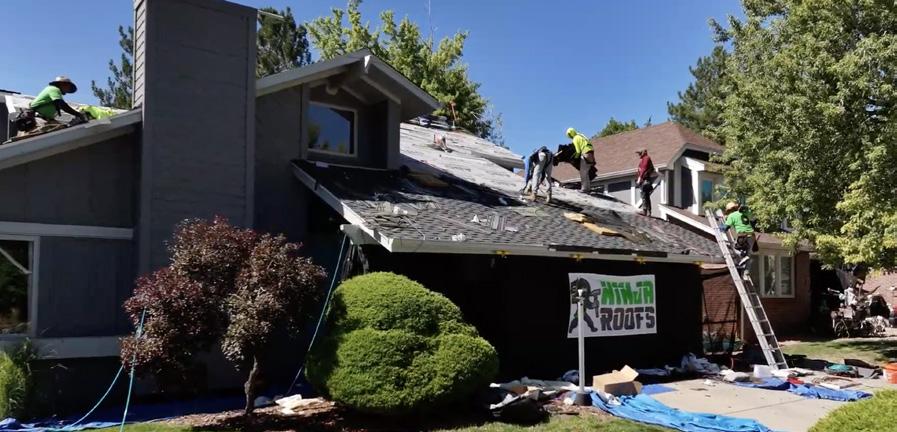


Class 4
Impact-Resistant Roofing Shingles
Transforming Roofing Efficiency: Elevating Transparency and Communication
From Paper Trails to Streamlined Success
Build Trust with Customers Through Better Team Communication
From Napkins to $15 Million











Class 4
Impact-Resistant Roofing Shingles
Transforming Roofing Efficiency: Elevating Transparency and Communication
From Paper Trails to Streamlined Success
Build Trust with Customers Through Better Team Communication
From Napkins to $15 Million



At JobNimbus, we see roofing contractors as more than business owners—they’re leaders and innovators shaping the world we live in. That’s why we’re committed to more than just providing software—we’re empowering contractors to become the heroes of their own success stories. Our mission to make contractors heroes is simple. We’re here to help you grow your business, balance your life, and make a lasting impact in your community.
But success doesn’t happen by accident. It starts with clarity—knowing where you stand, what’s working, and where there’s room to grow. Peak Performance: 2025 Roofing Industry Benchmarks for Success is here to provide that clarity.
Peak Performance isn’t just a report. It’s your playbook for progress, packed with data-driven insights, industry benchmarks, and proven strategies from topperforming roofers. Whether you’re just starting up, refining your operations, or expanding your team, this report will guide you to new heights of success.
JobNimbus is about more than streamlining operations; we’re driving transformation. Together with roofing contractors, we’re building better businesses, stronger communities, and an elevated roofing industry.
It’s time to rise to the challenge. The climb to the peak of success starts here— let’s go.
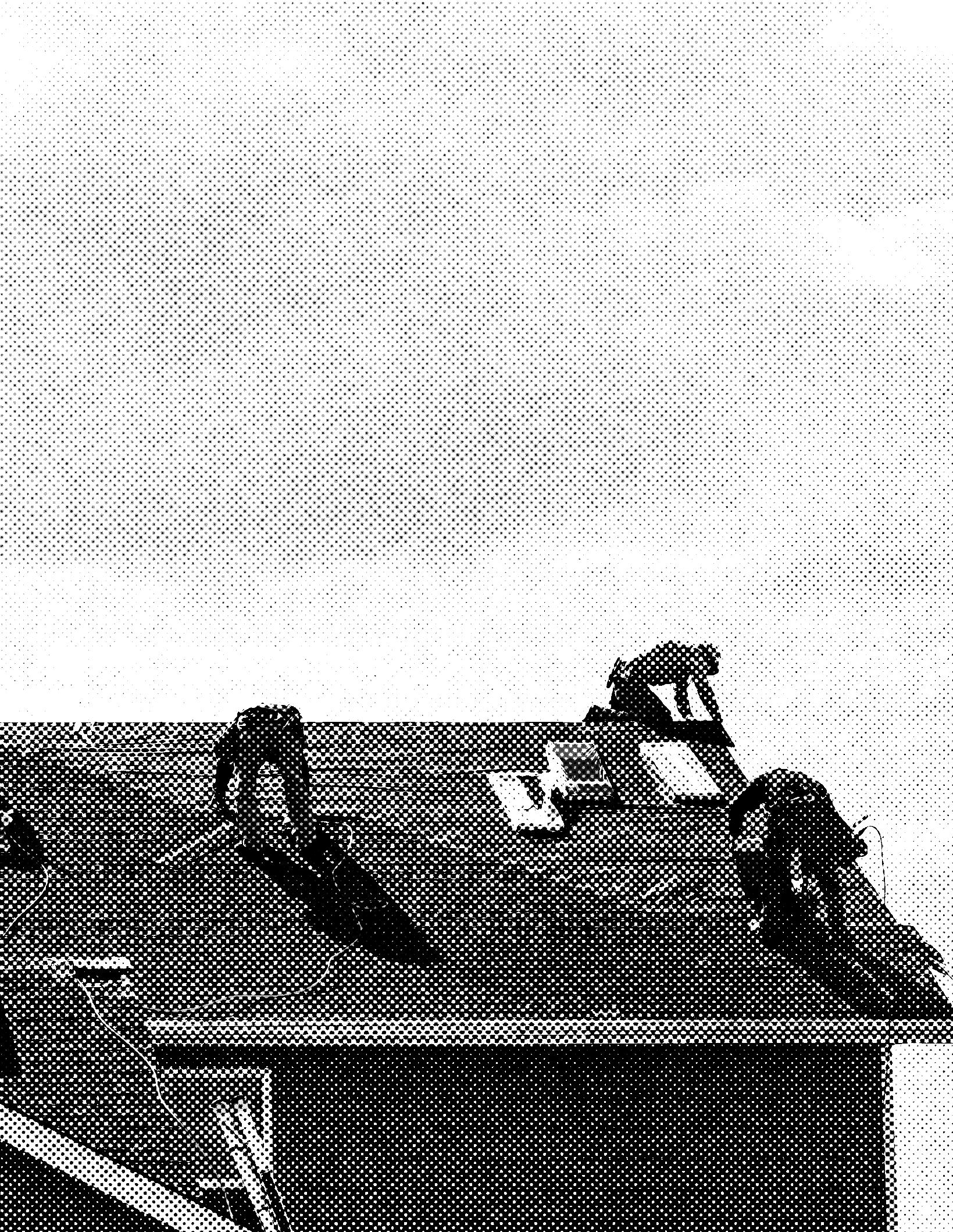
There’s a lot of data in Peak Performance this year, and we looked at it through several different lenses to find the most valuable information. We sliced the roofing data into different segments. Here’s how we define those cuts:
1. Overall: This is the data without any segmentation
2. Base: Base data is not the same as overall data. This is the lower counterpart to whatever the cut is, e.g., lower volume on a volume chart, lower revenue on a revenue chart, etc.
3. High Volume: This is a new cut this year. High-volume roofing companies did at least 400 roofs in 2024.
4. High Revenue: Roofing businesses that earned over $4 million in annual revenue during 2024.
5. Highly Rated: Roofing businesses with an average online review rating of 4.9 stars or above. We changed this from last year’s definition of highly rated being 5 stars.
6. Retail: Businesses that only do retail roofing work.
7. Insurance: Businesses that only do insurance roofing work.
8. Both: Roofing businesses that do a mix of retail and insurance work. We also use this interchangeably with “50/50” or “companies that do retail and insurance.”
9. JobNimbus Users: Roofers that currently use JobNimbus.
Additionally, we sliced the homeowner data into a few segments:
10. Overall: This is the data without any segmentation.
11. Recently Replaced Roof: These homeowners have replaced their home’s roof within the last three years.
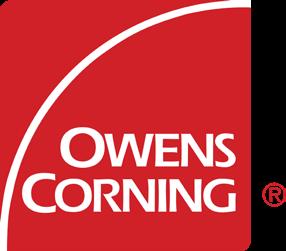
Take your roofing business to the next level using data from Peak Performance and the tools in the Tech Stack from Owens Corning.
CRM Reviews Communication Inspection

Quotes Presentations Measurements Leads
Peak Performance is an extensive report, and even if you know you need to improve, it can still be hard to know where to begin.
The Tech Stack by Owens Corning is built to help point you in the right direction. With recommended software tools touching on every section in Peak Performance, the Tech Stack will equip your team with the tools it needs to succeed.

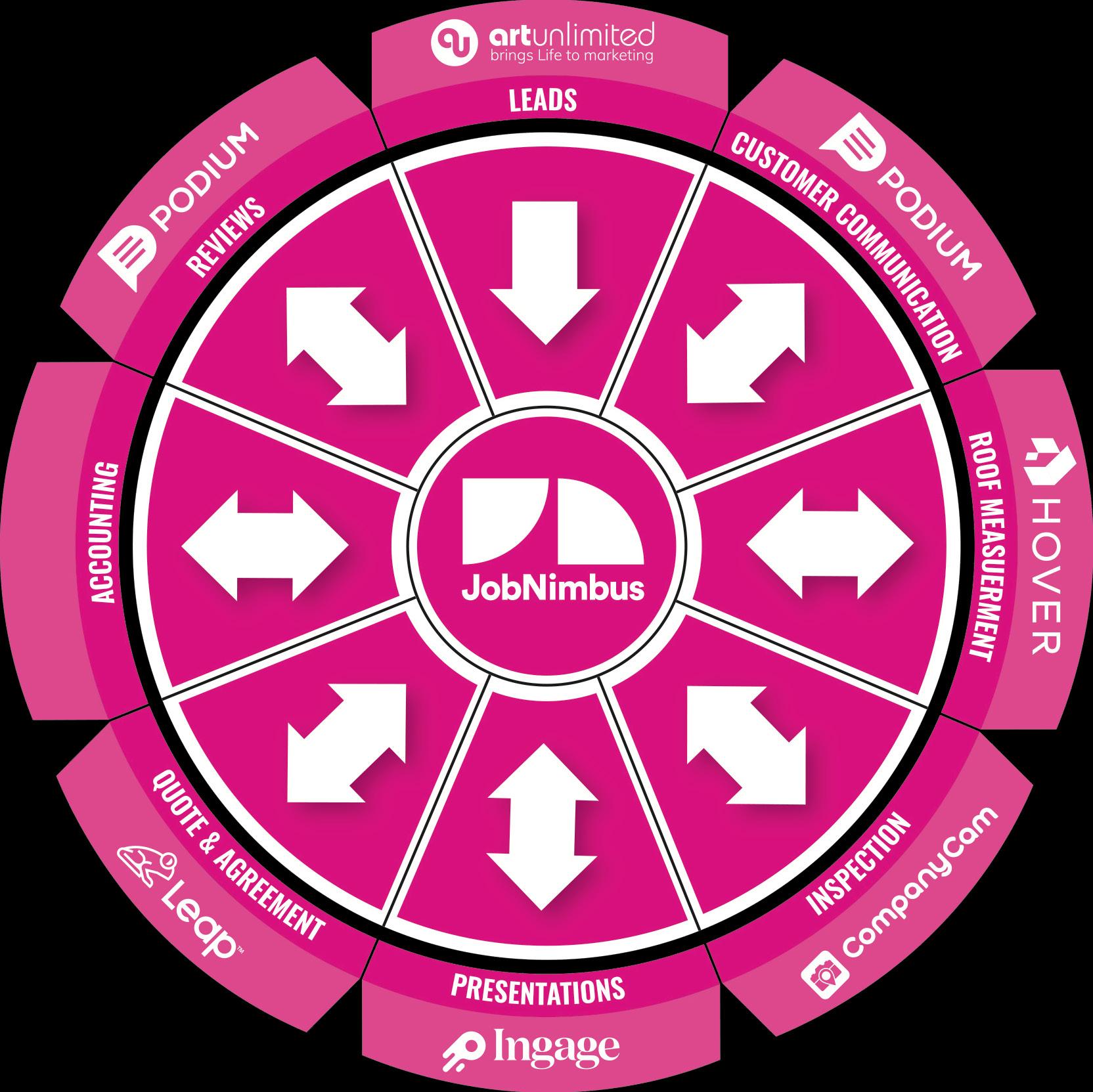
The Demographics section reveals who powers the roofing industry. Discover key insights about:
• Age & Experience
• Diversity
• Roles & Business Longevity
• Regional Reach

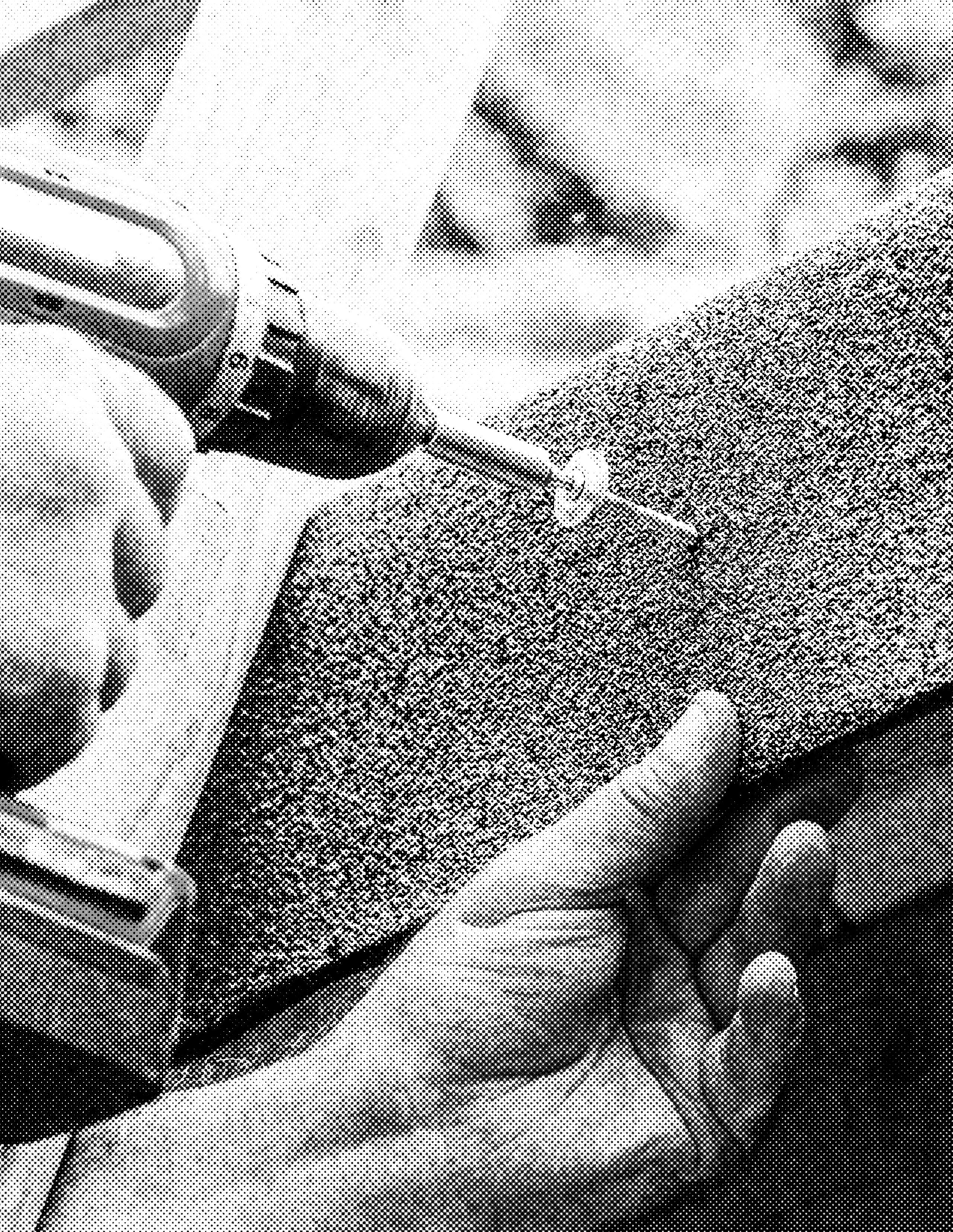
What is your age?

How many years have you been roofing?
Nearly 1/2 of all roofers 75% of roofers are between the ages of 26 and 45.
are new to the roofing scene and have been in the industry for 5 years or less.
Although roofing is a male-dominated industry, the roofing space has

13% of our survey respondents declared themselves Hispanic/Latino. According to the National Roofing Contractors Association, Latinos make up a reported
Our goal for next year is to get more Hispanic/ Latino participation to make up the gap. 30% of the workforce. opportunities for both men & women.
What is your role at your company?

Owners represent the largest portion
of our survey respondents, but we also heard from roofing professionals in many other roles.
What other roles do you perform as owner?
Roofing business owners wear many hats.
However, it’s unlikely for them to fill the role of a crew member.
How many years have you been in business?

is the most common amount of time in business for roofing companies.
High-volume companies tend to be more established than low-volume companies, with being in business for 11 years or more. 3-10 years 67%
than base companies, with 64% being in business for at least 11 years. High-revenue companies also tend to be in business longer
Which regions does your company serve?

What percentage of your jobs are retail?
but we also have some insight into Canadian and international markets as well. Our data focuses on roofing companies within the United States,
For 40% of roofing companies,
retail represents a small percentage (0–25%) of their jobs.

Most roofing companies only operate in one location, although 30% have multiple locations.
High-volume roofing companies fall to extremes—most have one location, but over 1/4 have 4 or more locations.
The number of high-revenue companies decreases in each category except for one interesting jump at 4+.

As the number of locations increases, the number of highly rated companies diminishes in each category.
How to nail it: It’s easier to focus on ratings for one location than many. If you manage multiple locations, you must know how to keep high ratings for each one.
The Services section explores what roofing companies offer and how these choices influence their success. Learn about:
• Sales & Installation
• Roof Volume
• Business Setup
• Service Offerings



Most companies sell and install roofs rather than specialize in one or the other.
The majority of high-revenue roofing companies do both roofing sales and installation.
How to nail it: If you’re selling and installing, you’ve got to really nail both parts of the process to give customers a good experience. A good sales experience won’t outweigh a poor installation experience or vice versa.
Highly rated companies have nearly a 50/50 split between those selling roofs and those selling and installing.

Roofing contractors are pretty evenly split between doing 0 and 500 roofs, but just over 10% are completing over 500 roofs a year.
How to nail it: If you want to be in the top 10% of roofing companies, you’ve got to do 500+ roofs in a calendar year.
High-revenue companies lead the way in the realm of doing 200+ roofs per year.
How to nail it: This was an interesting one for us to slice, and it’s given us more questions to ask for next year. We assume this is because doing more roofs leads to more revenue, but we’d love your feedback.
The number of JobNimbus users doing 201–500 roofs a year is over double the number of roofers not using JobNimbus.
How to nail it: If you want to do more roofs, you need processes in place. Get a project management software to help you keep jobs organized.

Many roofing businesses have a dedicated sales team (79%), fewer have company trucks (73%), and even fewer have a brick-and-mortar building (71%)
High-revenue companies are far more likely to have a brick-and-mortar building, trucks, and a dedicated sales team.
How to nail it: This may be a bit of a chicken-and-egg situation. High-revenue roofing companies can have more of these business components because they have more revenue to spend.
Insurance lags behind roofing companies that do just retail jobs and those that do both retail and insurance in brick-andmortar buildings (66% vs. 82% and 76%) and company trucks (63% vs. 86% and 85%).
How to nail it: If you just do insurance jobs, you may not need a building, but you still need a dedicated sales team.

Residential retail is the most common roofing service (95%) of the roofing contractors we surveyed, whereas commercial insurance is the least common (64%).
How to nail it: In a crowded market where 95% of roofers offer residential retail services, you need to provide a stellar customer experience to make your company stand out from the competition.
Highly rated roofing companies are offering more types of services across the board.
How to nail it: If you want to be successful and get high review ratings, expand your scope.

Gutters (87%), siding (66%), and window/ skylight/door services (59%) are the most common secondary services to offer as a roofer.
How to nail it: Consider expanding your business services to open up a new market of customers.
High-volume roofing companies more frequently offer gutter (89% vs. 86%) and solar services (21% vs. 18%) than base.
How to nail it: Gutter and solar jobs complement the roofing services you’re already doing. Offer bundle pricing for customers who choose to use two or more of your services.
High-revenue roofing companies do more roof coatings than the base (55% vs. 48%).
How to nail it: Adding roof coatings to your list of services gives you another potential revenue source. Include roof coatings in your bids to upsell customers.
BY JON GARDNER, SENIOR LEADER OF STRATEGIC PARTNERSHIPS & LEARNING AND DEVELOPMENT AT OWENS CORNING ROOFING
If you’re a roofer who lives in an area where intense storms frequently occur, your customers are likely concerned about roof damage due to hail, airborne debris, and high winds.
But did you know that a homeowner’s choice of roofing shingles plays a critical role in preserving the integrity of their roofing system during severe weather? Impact-resistant shingles can offer advanced protection from hail and wind-blown debris.
One of the highest ratings possible for impactresistant shingles is Class 4. Learn what goes into creating durable, impact-resistant Class 4 shingles.
Roofing shingles labeled as impact-resistant are typically evaluated using one of the standardized industry tests, such as UL 2218 and/or FM 4473. These tests use different methods to evaluate the shingles’ performance, and ultimately, those that pass are given a class rating system (typically Class 1–Class 4), with a Class 4 rating being one of the industry’s highest for impact.
Often, impact-resistant shingles can have a unique composition and design, making them more durable and resilient.
Impact-resistant shingles may also be known as:
• High-impact shingles
• Hail-resistant shingles
• Class-rated shingles
Every year, thousands of homeowners across the country suffer costly damage to their roofs during hailstorms and other extreme weather events. According to the National Oceanic and Atmospheric Administration (NOAA) Severe Storms database, 4,436 major hail events occurred in the U.S. in 2022, and these storms caused billions of dollars in damage. One insurer alone, State Farm,

reported paying out more than $3.5 billion in claims related to hail damage in 2022, a 1 billion dollar increase from the prior year.
Certain parts of the U.S. are more hail-prone than others. According to the Insurance Information Institute, the five worst states for major hail events in 2022 were:
• Texas - 458 hailstorms
• Nebraska - 399 hailstorms
• Minnesota - 387 hailstorms
• Kansas - 289 hailstorms
• South Dakota - 275 hailstorms
If your customer lives in an area where frequent severe weather events put their roof at higher risk for damage, Class 4 rated roofing shingles may be right for them.
Class 4 roofing shingles are a premium shingle product and may cost more than standard, non-impact-resistant shingles. However, due to the beneficial qualities of these high-impact shingles, the initial expense may be worthwhile if your customer lives in a region that frequently experiences hail and windstorms.
Class 4 impact-resistant shingles may:
• Eliminate the need for, or reduce the frequency of, roof repairs. Enhanced protection can mean less damage and potentially fewer unexpected repair expenses.
• Extend the lifespan of the roof. Shingles are the roof’s first line of defense. A roof with intact, undamaged shingles is better protected season after season.
• Be required to meet local building codes: Due to the frequency of hailstorms, some regional and local governments have established code requirements for Class 3 or 4 rated impact-resistant shingles, especially for new installations.
• Save money on homeowner’s insurance and premiums. Many insurance companies offer discounts for homeowners who use Class 4-rated shingles. Homeowners can contact their insurance provider to learn more.
Non-impact-resistant roofing shingles may be more easily damaged when struck by hail or other debris during a storm.
Therefore, industry-leading roofing manufacturers have engineered asphalt shingles that can help withstand greater impacts and potentially reduce the amount of roof damage caused by storms and hail. Thanks to advancements in shingle design and construction, homeowners can have more protection from hail events and less risk of a costly roof damage claim.
Impact-resistant shingles are commonly engineered in two ways:
1. A reinforcing, polymer-based mesh is added to the back of a standard asphalt shingle. This mesh is embedded into the asphalt to strengthen the shingle and help reduce cracking when impacted by a hailstone or other debris.
2. Rubber-like polymers, such as SBS (styrene-butadiene-styrene), can also be added to the asphalt composition to make a shingle more impact-resistant. Integrating the SBS polymer blend with the asphalt produces a rubberizing effect, creating a shingle that is more flexible than standard shingles and more capable of recovering from hail impact.
After a series of catastrophic hailstorms in the mid-1990s across the U.S., the roofing industry developed a test to evaluate their products’ resistance to impact. This standardized test, also known as the Underwriters Laboratory 2218 (UL 2218), is nicknamed “the steel ball test.” This test is now one of the most commonly used
to test and rate the impact resistance of asphalt shingles. Based on the results of this test, UL assigns one of four ratings to a shingle, with Class 4 being the highest possible rating.
During this testing method, a steel ball is dropped from a specified height onto an installed roofing shingle several times. The shingle is then turned over and inspected for any breaks or cracks that could potentially allow water to leak through.
To receive a Class 4 rating, a roofing shingle must withstand having a 2-inch steel ball dropped multiple times from a height of 20 feet. If this same test is repeated on a 4-inch concrete paver, the force of the steel ball could crack the paver in half.
While Class 4 is the highest rating for impact resistance, shingles can also receive lower ratings, such as Class 3 and Class 2. The difference between the ratings is that Class 3 shingles withstand a smaller steel ball dropped from a lower height, and likewise for Class 2.
Owens Corning offers two impact-resistant shingles, TruDefinition® Duration STORM® and TruDefinition® Duration FLEX®. Both shingles meet the highest impact rating possible—UL 2218 CLASS 4—to protect homes from the impact of hail and storm debris.

In regions where severe weather is a regular threat, choosing the right roofing shingles is not just a preference—it’s a necessity. Class 4 impact-resistant shingles provide unmatched protection, durability, and peace of mind for homeowners facing storm-related risks like hail and wind-blown debris. With rigorous testing and advanced engineering, these shingles are critical to safeguarding homes and minimizing costly repairs.
Roofing professionals can play a pivotal role in educating customers about the benefits of these high-performance products, ensuring roofs are built to withstand even the most extreme conditions. By recommending Class 4 impact-resistant shingles, you’re not just installing a roof—you’re providing homeowners with long-term security and resilience when they need it most.
Dive into the Marketing section to uncover how roofing companies attract and engage customers. Key areas include:
• Reviews & Ratings
• Lead Generation
• Social Media
• Video Marketing



“Referrals aren’t just leads— they’re proof you’re doing great work. Make sure every happy customer knows how much you value their recommendation.”
BRAD HODSON, DIRECTOR OF GROWTH MARKETING, JOBNIMBUS
How many reviews does your business have online?

Half of roofing businesses fall into two extremes: they either have 1–25 reviews (25%) or 200+ (26%). Having over 200 reviews is a best-in-class number. The type of roofing work you do can impact how many reviews you get—fewer insurance roofers get into the 200+ range (24% vs. 33% for retail vs. 35% for those that do both).
How to nail it: Getting 200 or more reviews makes a huge difference for a company. Put a consistent effort into getting more reviews for your business to see major dividends.
High-volume roofing companies excel at having over 200 reviews (67%).
How to nail it: If you want more reviews, get more opportunities by taking on more jobs.
66% of high-revenue businesses have 100+ reviews.
How to nail it: While having over 200 reviews is best-in-class, shoot for at least 100 reviews.

44% of highly rated roofing companies have more than 100 reviews.
How to nail it: You can still be highly rated with lots of reviews, so don’t be afraid to get more.

Over 60% of roofers have an average review rating of 4.9 or 5.0.
How to nail it: There’s a high bar for roofing companies to stay competitive. If you want to be among the top roofers, you can’t settle for an average rating below 4.9 stars.
Fewer high-volume roofing companies are in the 4.9–5.0 rating range (46%) than in the highly rated (100%), high revenue (51%), and base categories.
How to nail it: A 5.0 average rating isn’t realistic for a company that does a high volume of roofs, but 4.7 and above is.
More JobNimbus users are in the 4.7–4.8 and 4.9–5.0 rating range than nonJobNimbus users (85% vs. 76%).
How to nail it: Staying organized and communicating with your customers leads to better review ratings. Get a project management and communication tool to improve your customers’ experience.

“Consistency beats volume in social media. Posting 2–3 times a week is all it takes to stay in front of your audience and generate leads.”
ZACH STEWART, DIRECTOR OF PAID MARKETING, JOBNIMBUS

Referrals (91%) and networking (75%) are the two most popular lead sources for roofers, but referrals are by far the most common.
How to nail it: Here’s a difference between networking and referrals, and lead attribution is essential to gauging your success. If you meet someone, give them your business card, and then do their roof, that’s a networking lead. But if a customer connects you with their neighbor, that’s a referral lead.
High-volume companies focus on canvassing (70% vs. 47%) and paid online ads (52% vs. 45%) far more than lowervolume companies.
How to nail it: High-volume roofing businesses rely on active lead-generation strategies to attract new customers. Implement several passive leadgenerating methods to ensure a constant stream of new leads.
High-revenue contractors tend to use a more diverse range of lead sources, with higher reliance on social media (75% vs. 63%) and partnerships (71% vs. 52%). They also leverage events and trade shows (34% vs. 20%) and paid online ads (54% vs. 42%) more effectively than base contractors.
How to nail it: When moving toward higher revenue, broaden your lead generation by investing in partnerships, trade shows, and paid online ads. High-revenue contractors should continue diversifying their strategies while refining underperforming channels to optimize lead quality.
Highly rated roofers rely more on customer referrals (95% vs. 87% for the base), social media (72% vs. 61%), and local advertising (74% vs. 63%). They also outperform in canvassing (56% vs. 45%) and pay-per-lead services (24% vs. 18%).
How to nail it: Build more robust referral networks and boost your social media and local advertising presence. Highly rated roofing companies should continue leveraging these strengths while exploring additional opportunities, like pay-per-lead services and trade shows.

JobNimbus users have more leads in every category, particularly social media (71% vs. 60%), paid online ads (51% vs. 37%), and customer referrals (94% vs. 85%). They also outperform nonJobNimbus users in leveraging direct mail, partnerships, and local advertising. How to nail it: There’s something to be said for having an all-in-one CRM to track and optimize lead sources. If you don’t have a CRM, that should be your next purchase.
Retail-focused roofing contractors lead in leveraging social media (79%), paid online ads (60%), and customer referrals (98%). As expected, insurance roofing companies rely more on canvassing (71%). Those handling both job types tend to use a broad mix of strategies, excelling in event participation (41%) and local advertising (79%).
How to nail it: Insurance roofers could boost lead generation by increasing their use of digital channels like social media and paid online ads. Roofing contractors doing both should use more paid advertising to compete.

40% of roofers have between 26% and 50% of their leads come via word of mouth. Some roofers (11%) get nearly all their leads from word-of-mouth referrals.
How to nail it: The roofing space lives and dies by word-of-mouth referrals. Without this critical lead source, roofers would have a hard time finding new leads and would have to pay a lot more for them. It’s important to be more intentional and consider how to increase the referrals that past customers send your way.
Companies that focus on volume trend lower on referrals than those that focus on ratings or revenue.
How to nail it: Don’t let speed and efficiency prevent you from providing a praiseworthy customer experience. Brainstorm ideas for how your team can spend a little more time to earn a good referral. These could include following up on past jobs, leaving a personal thank-you note, and having automated communication about how jobs are progressing.
1/3 of high-revenue roofing companies get at least half of all their customers from word-of-mouth referrals.
How to nail it: Make word-of-mouth a significant driver of your customer base by implementing strategies such as referral programs, follow-up communications, and asking satisfied clients for reviews.
As expected, roofing companies with better reviews also get more referrals from their customers.
How to nail it: Happy customers happily refer you to their friends, family, and neighbors. Increase your quality of work, speed to completion, and communication to ensure your customers are eager to share your information with their circles.

Insurance-focused roofing companies trend slightly lower on word-of-mouth referrals than companies that do retail or a mix of retail and insurance.
How to nail it: The most significant lead opportunity is word-of-mouth. If your insurance-based roofing company isn’t generating referrals from previous customers, you either need to step up in providing better quality service or build a muscle to gather more referrals.
Do you use incentives to get more reviews from your customers? If so, what are they?

Nearly half of contractors (44%) don’t offer incentives for customer reviews, while the most common incentives are referral programs (44%) and gift cards (27%). Service discounts and sales team rewards are used less frequently.
How to nail it: Introduce simple rewards, like gift cards or discounts, to encourage more customer reviews. If you already offer incentives, try promoting referral programs and tying team rewards to review collection to boost both reviews and overall customer engagement.
High-volume roofing contractors are much more likely to use incentives for customer reviews, with 75% offering rewards compared to 52% of the base. They favor referral programs (58%) and service discounts (29%) more than base roofers.
How to nail it: Consider adopting incentives like referral programs and gift cards to encourage more customer reviews. High-volume roofing companies could further boost review collection by continuing to diversify incentive strategies and actively promoting them to customers.


The most common frequency for roofers to post on social media is 2–3 times a week (27%).
How to nail it: You should post at least 2–3 times a week. If you want to excel, post more often.
More than half of all high-revenue roofing companies post at least twice a week (57%), but nearly 10% post more than 7 times a week.
How to nail it: To increase visibility and attract more business, aim to post on social media at least twice a week with a mix of different content.

“Roofing companies with 200+ reviews attract significantly more leads than those with fewer. Having a high rating is great, but the most important thing is building trust through volume.”
TYSON SANTO, MARKETING STRATEGY ARCHITECT, JOBNIMBUS

The top three social media sites roofers use for business are Facebook (97%), Instagram (72%), and TikTok (22%).
How to nail it: With only 3% of roofing companies not on Facebook, make sure your business has a presence on the platform. Additionally, consider posting on up-and-coming social media sites like TikTok to reach new audiences.

With most roofers posting on Facebook, it makes sense that Facebook brings in the most leads of any social media platform.
How to nail it: The three most lead-generating social media sites are the same top three that roofers post on: Facebook, Instagram, and TikTok. However, roofers also get leads from X and Snapchat, so don’t be afraid to use those platforms.

Nearly ¾ of roofers get 1–2 leads from social media each week.
How to nail it: If you’re among the majority of roofers (71%) getting just 1–2 leads per week from social media, focus on optimizing your strategy. Post consistently, engage with your audience, and use targeted ads to expand your reach. Incorporating customer testimonials, project highlights, and educational content can help you build trust and increase lead generation over time.
Nearly half of high-volume roofing companies get 3+ weekly social media leads.
How to nail it: Invest in an active and strategic social media presence to generate consistent leads.
Insurance roofing companies are higher in the 1–2 range (76%), while retail is higher in the 6–10 range (4%). Companies that do both retail and insurance are higher in the 3–5 (33%) and 11+ (7%) ranges.
How to nail it: Focus on regularly posting engaging, targeted content; leveraging platforms like Facebook and Instagram, where your audience is most active; and using paid ads or boosted posts to increase your reach.

Over 1/3 of roofers don’t do any type of video marketing. On the other hand, another 1/3 of roofers have someone in their company create videos for their business.
How to nail it: Tap into the power of video marketing. Start with a company introduction video, customer testimonials, and examples of your work. in a calendar year.
The most common approach for highvolume companies is to have someone within the company do video marketing (47%). However, many high-volume businesses also have both someone within the company and an outside party working on videos (26%).
How to nail it: It’s a great idea to leverage the people you already have in your company to help with your videos, but you need to give them support. An outside agency or freelancer can amplify your efforts and ensure you get the most out of your videos.
Nearly ¼ of high-revenue roofing companies aren’t making marketing videos.
How to nail it: It is well worth allocating some of your revenue toward a video marketing strategy. Whether you have someone in your office make videos or you outsource them, you need to purposefully create videos for your roofing company.

Products and services seem pretty well covered, while YouTube and podcasts are untapped.
How to nail it: Roofers should consider expanding their use of YouTube to reach a wider audience and boost visibility. Investing in ads and exploring new formats like podcasts could also help diversify your marketing efforts and attract more leads.
High-revenue roofing contractors focus more on customer testimonials (56% vs. 34% for the base) and slightly more on YouTube (23% vs. 15%). However, base roofers are more likely to use ads (36% vs. 28% for high revenue).
How to nail it: Base roofers could benefit from incorporating more customer testimonials to build trust and credibility. High-revenue roofing contractors should consider increasing their ad use to expand their reach and drive more leads, complementing their testimonial and product-focused content.

Over half of roofing professionals (55%) spend $500 or less on video marketing, while only 28% invest more than $2k. With video emerging as an essential part of marketing, it’s rarely being used in roofing.
How to nail it: Roofing companies should consider increasing their investment in video marketing, as it’s a powerful way to attract leads and build trust. Even a modest increase can help create more professional content that boosts engagement and effectively showcases your work.
Both high-volume and base roofing businesses have a similar percentage (54% vs. 55%) of spending $500 or less on video marketing. However, high-volume roofers are more likely to invest over $5k (28% vs. 13% for the base), suggesting they see more value in higher-budget video content.
How to nail it: Consider increasing your video marketing budgets to remain competitive. To become a high-volume roofing company, focus on optimizing your video content by tracking performance and refining your strategy to maximize ROI.
High-revenue roofing contractors are the most likely group to invest heavily in video marketing, with 16% spending over $10k compared to just 5% of the base.
How to nail it: Base roofers should explore gradually increasing their video marketing investment to enhance their brand presence and attract more leads. High-revenue roofing businesses can continue leveraging larger budgets but should focus on tracking performance to ensure their investment delivers strong returns.
BY DELISA DIMERCURIO, MANAGER OF DIGITAL PARTNERSHIPS AT SRS DISTRIBUTION

The roofing industry has long struggled to adopt modern communication technologies, relying on handshakes and verbal instructions, which often lead to inefficiencies for both homeowners and contractors.
With increasing homeowner access to information and higher expectations, clear communication has become essential.
After signing a contract, homeowners face uncertainty about delivery times and project progress, seeking companies that provide constant updates. Contractors also deal with miscommunication, scrambling to adjust schedules and fix errors like incorrect material orders. In storm-impacted areas, these delays can be costly.
By adopting advanced technologies, the industry can improve communication, providing clarity for customers and a more efficient workforce.
Enhancing Communication and Efficiency through Customer Relationship Management (CRM) Tools
Customer Relationship Management (CRM) tools enhance communication and efficiency by centralizing functions such as photo management, customer communication, and team coordination. With integrated channels like SMS and email, CRMs provide real-time visibility, allowing leadership to monitor interactions and resolve issues quickly.
This unified approach
• reduces overhead costs
• automates updates to minimize delays
• improves responsiveness
• boosts customer satisfaction

CRMs also streamline proposal creation and work orders, reducing errors and speeding up processes, while internal communication tools eliminate confusion and ensure everyone stays aligned.
The Role of Distribution Partners in Enhancing Communication and Efficiency
Distribution partners like SRS Distribution play a critical role in optimizing communication and operational efficiency. Through open APIs, contractors gain direct access to pricing, availability, and ordering information within a CRM, eliminating the need to navigate multiple systems.
Distribution has also made significant strides in enhancing communication with contractors through a variety of offerings, such as delivery tracking, weather maps, and product specifications, all available in one platform. These tools reduce the chances of errors by providing contractors with real-time updates and detailed information, ensuring greater accuracy and efficiency. By streamlining access to key resources in one place, these solutions help contractors stay informed, minimize disruptions, and improve overall project outcomes.
Kevin Carfa, Manager of Digital Partnerships at SRS Distribution, notes, “As roofing contractors continue to evolve with technology, we recognized the need to keep pace. At SRS Distribution, we aim to provide our customers with the smoothest journey—from order
placement to project execution—so they can focus on what matters most: growing their businesses and spending time with their families.” This commitment to efficiency and streamlined operations highlights the importance of embracing technological advancements within the roofing industry.
Transparency: The Key to Effective Communication and Efficient Distribution
Transparency is the cornerstone of effective communication and operational efficiency within a roofing business. By leveraging modern technology, such as CRM tools and integrated distribution systems, contractors can ensure that customers and crews stay well-informed throughout every project phase.
Clear and consistent updates on project timelines, deliveries, and progress help reduce uncertainty and minimize the risk of miscommunication. Transparency fosters smoother workflows, better coordination, and a more positive experience for all stakeholders.
The Sales section highlights the tactics roofers use to close deals and enhance profitability. Explore:
• Sales Team Size
• Commissions & Compensation
• Proposals & Estimates
• Upgrades & Pricing



“You’re selling more than a roof; you’re selling choices. By offering good, better, and best options, you have a chance at more revenue, and your homeowner has autonomy over their decision. It’s a win-win.”
SANCIA TOTH, CUSTOMER MARKETING MANAGER, JOBNIMBUS

Most roofing businesses have small sales teams, with 53% employing 4 or fewer salespeople. Only 16% have 11 or more, indicating that larger sales teams are relatively uncommon.
How to nail it: Roofing companies with smaller teams should maximize individual performance through training and technology, like CRM tools, to boost efficiency. Those with larger teams should invest in strong leadership and scalable processes to ensure consistent performance as they grow.
Insurance roofing companies are more likely to have larger sales teams, with 24% employing 11 or more people compared to 8% of retail-only roofing businesses. Roofers handling both retail and insurance tend to have smaller teams, with 39% having just 1–2 salespeople.
How to nail it: If you’re in retail and insurance work, consider expanding your sales teams to better manage different types of leads and close more deals. Retail roofing companies might also consider gradual team growth to boost capacity, while insurance-focused businesses should focus on optimizing their larger teams for efficiency and performance.
High-revenue roofing businesses tend to have larger sales teams, with 25% employing 11 or more people compared to just 10% of the base. Smaller teams of 1–2 salespeople are much more common among base-level roofing companies (38% vs. 9% for high revenue).
How to nail it: Base-level roofing companies should look to expand their sales teams to better handle increased sales opportunities. Shoot for the 5–6 range first. High-revenue businesses should continue investing in their larger teams while focusing on training and efficient processes to maximize roofing productivity and revenue.

High-volume roofing contractors have significantly larger sales teams, with 45% employing 11 or more salespeople compared to just 8% of the base. Smaller teams are more common among baselevel roofers, with 65% having 4 or fewer salespeople.
How to nail it: Base-level roofing companies aiming to grow could benefit from gradually expanding their sales teams to handle more leads and close more deals. If you’re already a high-volume company, optimize your team management and train to maintain performance as your teams scale.

1/3 of roofing businesses pay their sales teams on commission only, while 53% offer salaries ranging from $50k to $100k. Only 20% provide salaries over $100k, indicating higher earnings are less common.
How to nail it: Roofing companies relying solely on commission could consider offering base salaries to attract and retain top sales talent. For those already offering salaries, providing performancebased bonuses or raises can help motivate and reward high achievers.
Insurance roofing contractors are the most likely to rely on commission-only pay (47% vs. 19% for retail and 30% for both). Retail-only roofers tend to offer higher salaries, with 29% paying $75k–$99k compared to 16% of insurance roofers and just 8% of those doing both.
How to nail it: Insurance and mixed-job roofing companies could benefit from introducing base salaries to attract and retain more sales talent. Retail companies should maintain higher salary ranges while exploring performance-based incentives to drive further sales growth.
High-revenue roofing companies are less likely to rely solely on commission (29% vs. 36% for the base) and are more likely to offer higher salaries, with 30% paying $100k or more compared to just 13% of the base. This difference suggests a stronger focus on compensating sales teams competitively in larger businesses.
How to nail it: Base-level roofing companies could attract and retain stronger sales talent by offering higher salaries or introducing performance bonuses. High-revenue roofing businesses should continue investing in competitive pay to maintain a motivated and high-performing sales team.

High-volume roofing companies are more likely to rely on commission-only pay (39% vs. 32% for the base), but some are also willing to pay top dollar. Notably, 30% of high-volume roofers pay their sales team $100k or more, compared to just 17% of the base.
How to nail it: High-volume roofers could balance commission-only structures with base salaries to attract and retain top performers. Base-level roofing companies might benefit from offering higher salaries or performancebased incentives to stay competitive and drive growth.

Most roofing contractors (73%) base their commissions on gross sales, with 37% offering 10%. However, 27% tie commissions to profit, with 17% giving 20% of profit, showing a focus on rewarding profitability.
How to nail it: Roofing companies paying on gross sales could consider shifting to profit-based commissions to encourage higher-margin deals. For those already profit-focused, providing clear training on pricing and upselling can help reps maximize revenue and profitability.
High-volume roofing contractors favor a 10% commission on gross sales, with 49% using this model compared to 34% of the base. They are less likely to offer profitbased commissions, particularly at the higher 20% rate (10% vs. 18% for the base).
How to nail it: High-volume roofing businesses might consider experimenting with profit-based commissions to encourage sales reps to focus on more profitable jobs. Offering a mix of gross and profit-based incentives could help balance high sales volume with healthy profit margins.
High-revenue roofers lean heavily on a 10% gross sales commission, with 45% using this rate compared to 32% of the lowerrevenue companies. They are less likely to offer 20% profit-based commissions (14% vs. 18% for base), focusing more on rewarding sales volume than profitability.
How to nail it: High-revenue roofing contractors could consider adding profit-based commissions or bonuses to encourage a focus on higher-margin jobs. This approach can help maintain strong revenue while also boosting overall profitability.
Highly rated roofing contractors are more likely to offer 20% profit-based commissions (21% vs. 12% for base), focusing on rewarding profitability. They rely slightly less on gross sales commissions than the base, especially at the 10% rate.
How to nail it: Roofing contractors aiming for higher ratings could consider shifting more toward profit-based commissions to encourage quality work and higher-margin deals. This approach can align sales performance with delivering exceptional customer experiences that drive strong reviews.

Retail roofing contractors lean more on gross sales commissions, with 68% offering 10% or less. Insurance and mixed-job roofers are more likely to use profit-based commissions, especially at the 20% level (21% insurance, 20% both, vs. 12% retail).
How to nail it: Retail roofers could explore adding profit-based commissions to encourage higher-margin sales and improve profitability. For insurance and mixed-job roofers, maintaining or expanding profit-based incentives can help align sales efforts with overall business health.

Most roofing contractors (60%) pay commissions when the job is completed, while 29% spread payments out and 11% pay when the contract is signed. This data shows a strong focus on tying commissions to job completion.
How to nail it: To keep sales reps motivated, consider offering partial commissions at key milestones, like when a contract is signed or halfway through a job. This motivation can improve reps’ cash flow and encourage them to close deals faster.
Most roofing contractors across all job types pay commissions when the job is completed, especially in retail roofing (66%). Insurance-focused roofing companies are more likely to pay when the contract is signed (16%), compared to just 3% in retail.
How to nail it: Retail-roofing contractors might benefit from adopting partial payments at earlier milestones, similar to insurance-focused companies. This approach can help maintain momentum, motivate sales reps, and reward progress throughout the job.
On average, how many leads do each of your salespeople bring in per week?

Over half of roofers report that their salespeople bring in just 1–3 leads per week, with only 12% generating 7 or more. A notable 10% of sales reps aren’t bringing in any leads at all.
How to nail it: Focus on training your sales teams to find more leads, aiming for at least 4–6 per week. Using tools like lead-tracking software and offering rewards for high performance can help boost lead generation.
High-volume roofing contractors bring in more leads per salesperson, with 59% generating 4 or more leads per week compared to only 33% of base companies. They’re also far less likely to have salespeople bringing in no leads.
How to nail it: 1–6 leads is standard, but 7+ is best in class. If you’re a lowervolume roofing company, you can learn from high-volume roofers by focusing on lead-generation strategies, like using marketing tools or referral programs. Setting clear lead goals and offering incentives can help your sales teams improve performance.

Most roofing contractors say their sales reps frequently meet quotas, with 66% indicating “often” or better. However, 14% admit that hitting quotas is rare, and 20% operate without any set targets, which may limit their ability to measure and drive sales performance.
How to nail it: First off, if you don’t have quotas for all your sales reps, that’s your first homework. Quotas help you create accountability and track progress. Regular sales training and performance incentives can further boost effectiveness and motivation, ensuring more consistent sales goal achievement. Finally, using CRM tools can provide valuable insights into sales performance and help identify areas for improvement.
Sales reps in retail-only roofing companies are the most likely to meet quotas consistently, with 74% reporting “often” or better. However, those handling both retail and insurance jobs struggle the most, with 62% achieving “often” or better and 4% reporting they “never” meet quotas.
How to nail it: Roofing companies handling both job types should consider setting specific quotas for retail and insurance sales to better reflect the unique challenges of each. Implementing specialized training for mixed-sales teams could also help reps improve performance and more consistently meet their targets.

94% of roofers provide proposals for their homeowners.
How to nail it: Tap into the power of proposals when you estimate a job. Getting a visual proposal helps homeowners better understand the scope of your work and the impact you’ll make.
Only 9% of all high-revenue roofing companies use pen and paper to create proposals.
How to nail it: High-revenue roofers know the importance of using software for customer proposals. Tap into the power of digital proposal tools to speed up your proposal process and win more jobs.
High-volume companies lead the way in creating proposals for their customers. Only 3% don’t provide any sort of proposal.
How to nail it: While you want to make a proposal for each job, shift away from manually creating those with pen and paper. You can make faster, more accurate proposals with a proposal tool like JobNimbus’s estimating feature.

The most common way to present roofing proposals to customers is in person (74%) and through email (71%).
How to nail it: If you’re not giving proposals to customers via email and in person, you’re not hitting the benchmark. Try a dual approach of going over the proposal with them in person and then emailing it to them for review later.

Over half of all roofers use a tiered pricing approach for their bids.
How to nail it: Offering multiple pricing options transforms a vsales conversation from an all-or-nothing scenario into a choose-your-own-adventure. Give your clients several price points so they can pick the option that works best for them.
High-volume roofing companies are 8% more likely to provide good, better, best estimates than the base (68% vs. 60%).
How to nail it: If your goal is to do more roofs, you need to cast a wider net. To appeal to a larger client audience, offer three different roofing options at various price points.
There is a large gap between the number of insurance and retail roofing companies that provide good, better, best estimates. Insurance companies are the least likely to offer tiered estimates.
How to nail it: Even if you run a strictly insurance roofing business, you can still give your customer the option to upgrade with a good, better, best estimate.
What percentage of your customers choose the “best” or highest-priced option?

Roofers generally have 1–20% of their customers choose the highest or “best” option on a good, better, best estimate (44%).
How to nail it: Don’t get discouraged if only a few customers pick the “best” estimate option. Each one who picks the highest level elevates your revenue. .
High-revenue roofing companies are twice as likely to have 71–90% of their customers choose the “best” option on a good, better, best estimate (21% vs. 10%).
How to nail it: Coupled with the previous question’s data, you can see that highrevenue companies sell fewer jobs but at a higher price point. Hone your sales pitch to help more clients choose a higher package so you don’t need to sell as many jobs.

There’s a really interesting spread here, with half of roofers having a small 6–10% jump between the pricing tiers or more than 26% difference between options.
How to nail it: Test what percentage difference works for your roofing company. Try a 6–10% jump and see how it compares to a 26%+ jump.
Retail tends to skew low, whereas insurance roofing companies and those that do about half retail and half insurance skew much higher in their percentage differences.
How to nail it: If you run a retail roofing company, you can push your current pricing tiers to create a starker difference in the levels of your work.

Nearly 90% of insurance roofers give customers the option to choose upgrades.
How to nail it: You might think you shouldn’t include upgrades in your insurance estimates because insurance will only pay so much. However, many clients are willing to do an add-on because they aren’t paying for everything out of their pocket. Be sure to include a few highly relevant optional upgrades for every job, even if it is insurance.
Rank the importance of each when choosing a roofing product to offer to your customers.

According to roofers, the biggest guiding factor for choosing roofing products is quality, followed by product cost.
The Production section reveals what happens behind the scenes to deliver exceptional roofing projects. Insights include:
• Job Completion Time
• Production Day Practices
• Software Tools
• Essential Software
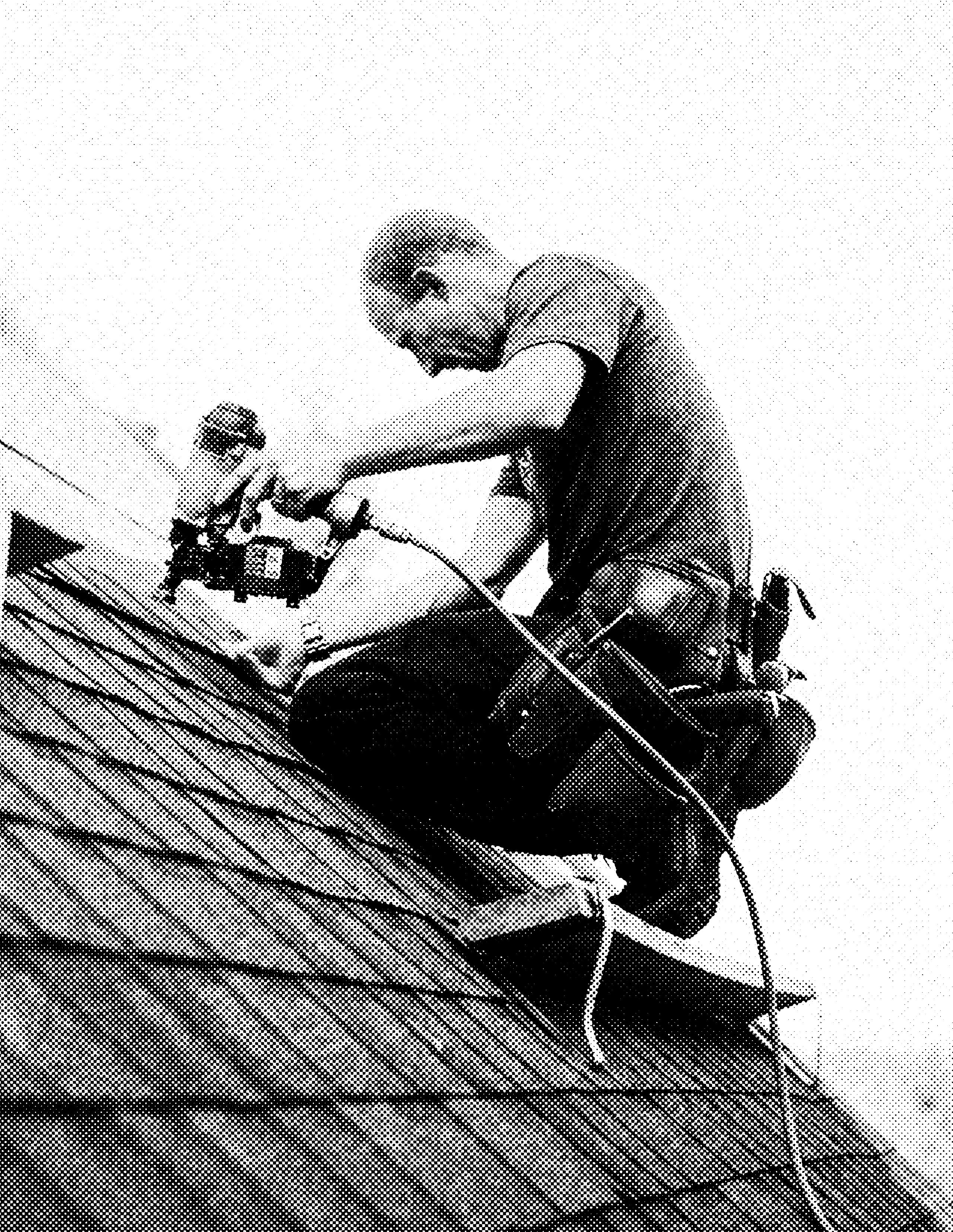


“Investing in your crew’s well-being is just as important as maintaining clear customer communication. A happy crew delivers better results.”
JAKE DEMPSEY, SENIOR PROFESSIONAL SERVICES CONSULTANT, JOBNIMBUS
How long does it take to go from lead to final invoice (sent after the job is complete)?

64% of roofers take between two weeks and a month to move a potential job into a completed one.
How to nail it: You should move a customer through your process fairly quickly. Let beginning and ending a job within a month be your guiding light, but keep in mind that larger jobs will often take longer.
Highly rated roofing companies outdo the base in having a production cycle of either a month (32%) or less than a week (11%).
How to nail it: Highly rated roofers have found the sweet spot for production: either do a simple job very quickly or do a larger job and take the time to do it well.
Just over 50% of high-revenue roofers have a production cycle that lasts between one and three months.
How to nail it: Don’t be afraid to take longer to complete a job if that’s the right thing to do. Be sure to communicate with your client throughout the entire process so they understand your timeframe.

50% of retail roofers begin and end a job within two weeks.
How to nail it: Retail roofers can move through jobs pretty quickly without the hassle of dealing with insurance. If you’re looking for a quick boost, seek out a retail job.

Roofing companies generally focus on providing communication (80%), customer service (84%), and high-quality work (83%) while on the job. However, only 16% pay special attention to their crew’s comfort on production days.
How to nail it: To really leave a lasting impression, go beyond the status quo by treating your crew well. Offer a canopy for a respite from the sun, or set up a few water stations to keep your crew hydrated.
High-volume roofing companies focus more on the marketing side of things with yard signs and branded items while they’re at the job site.
How to nail it: To get your name in front of a larger audience, you’ve got to invest in physical marketing efforts. Brand your equipment at the job site so your company name is visible.
High-revenue roofing businesses are higher in almost every category than base companies. The most notable point here is that high-revenue companies are more likely to have a supervisor on the job site during production.
How to nail it: If you want to be a high-revenue roofing business, you’ve got to be better all around, not just in marketing. Make sure to have a supervisor’s visible presence during production day.
Highly rated roofing companies stand out in every way on production day. Cleanliness (81% vs. 73%), crew comfort (20% vs. 12%), Equipters (16% vs. 12%), and supervisors (69% vs. 63%) are notably higher for roofing companies with at least an average 4.9-star rating than the base.
How to nail it: Customers can easily tell if you keep their lawn clean during production. Put an increased focus on maintaining a clean environment even while you’re working on the roof.while you’re working on the roof.
JobNimbus users are 13% more likely to provide their customers with a seamless and notable communication experience on production day than non-JobNimbus users (84% vs. 71%).
How to nail it: While you’re on-site for a job, take the opportunity to talk in person with your customers. If they aren’t home, be sure to communicate with them via email, phone call, or text message. Engage, a JobNimbus texting feature, lets you instantly contact your clients with updates and information.

Roofing companies that do a mix of insurance and retail work are doing more in nearly every category to enhance the production day experience than those that focus on only one type of roofing.
How to nail it: Whether you’re doing insurance, retail, or both, amplify your production day efforts to give your customers an incredible roofing experience. Branding is often overlooked but can make a big difference.

Over half of all roofing companies use 2–3 software tools (59%).
How to nail it: You need the right tools to do your job and keep your business running well. Get the software you need, but keep it as condensed as possible to empower smoother operations.
High-revenue companies are notably higher than base companies in the 4+ range of software tools (40% vs. 26%).
Base companies are nearly twice as likely to use 6+ software tools than highly rated companies (9% vs. 5%). This is the only cut for this question where the base uses more than the high companies.
How to nail it: If you can consolidate all your software tools and keep everything together, you should be able to get higher reviews.

“A job well done is great, but a job done on time and within budget is what turns customers into lifelong advocates.”
SETH NEILSON, CREATIVE DIRECTOR, JOBNIMBUS

A CRM is the most common type of software for roofing companies (79%) while canvassing software is the least common (19%).
How to nail it: Make sure your roofing company has a CRM (customer relationship management) software. A CRM improves visibility, organization, and lead management. It also enhances your customers’ experience, providing them with a more seamless and personalized interaction with your business.
There’s a large gap between how many high-revenue roofers use scheduling (54% vs. 38%), takeoff (31% vs. 16%), lead generation (38% vs. 25%), and project management software (53% vs. 33%) compared to base companies.
How to nail it: High-revenue companies buy the software they need to scale their business. Improving your accuracy, speed, and communication enables your company to win more jobs and earn more revenue.
High-volume roofing companies use more canvassing (35% vs. 16%) and estimating tools (70% vs. 63%) to get leads than base roofing companies.
How to nail it: If you want to bolster the number of leads you’re getting, consider a canvassing tool. With better lead tracking, you can close more deals and improve your ROI while staying organized and efficient.

Insurance-only roofing companies beat out retail and companies that do both in one category: canvassing (27% vs. 11% vs. 21%).
How to nail it: Get the software you need to empower your business. While getting leads is essential, you’ve got to have a streamlined process from beginning to end to give your company a competitive edge.
BY BRIQUELLE SIMPSON, DIGITAL CONTENT SPECIALIST AT JOBNIMBUS
Nestled in the Rocky Mountains of Colorado, Ninja Roofs has become a trusted name in residential and insurance roofing, with a growing footprint in retail and commercial projects. Owned by Taylor Duncan, the company generates $3–5 million annually and prides itself on delivering quality and reliability.
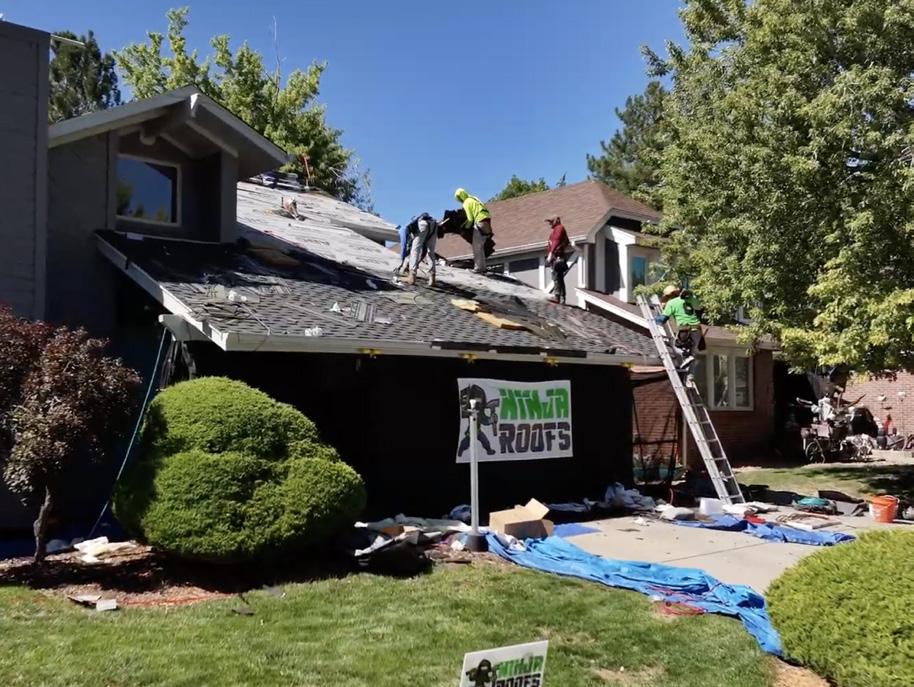

However, as the company grew, so did the cracks in its outdated processes. Manual workflows and disorganized operations were slowing them down. It was time for a change—and Ninja Roofs found their answer in JobNimbus.
Before adopting JobNimbus, Ninja Roofs relied on manual systems that couldn’t keep up with them. Key documents were faxed, and the production manager transported paper files to and from job sites—a system that proved disastrous when a break-in left the company scrambling.
“We basically didn’t know what roof we were doing on which day and with which crew and which supplier,” Taylor admitted.
This disorganized process didn’t just cause headaches; it increased the likelihood of mistakes, miscommunications, and delays. For a company aiming to scale, these inefficiencies caused major bottlenecks and stunted their growth.
JobNimbus became the game-changer Ninja Roofs needed, digitizing and centralizing their operations. With all project details in one place, the team could finally eliminate the errors and inefficiencies that had plagued them.
“Once we got JobNimbus, it was very easy to communicate with each other, and it really just helped reduce the amount of mistakes that were being made,” Taylor shared.
Adding SumoQuote into the mix further boosted their operations. By integrating SumoQuote with JobNimbus, quoting jobs became seamless and professional. “Now that SumoQuote is integrated with JobNimbus, it’s made our lives a lot easier,” Taylor noted. The ability to quickly generate customized, polished quotes gave the team an edge in delivering exceptional service.
Beyond centralizing and quoting, automations played a pivotal role in Ninja Roofs’ transformation. Scheduling tasks, syncing calendars, and updating project statuses became effortless. These streamlined processes saved time and elevated the customer experience.
Speaking of their automation, Taylor shared, “Homeowners love it, salespeople love it, and the office staff loves it.” By automating repetitive tasks, the Ninja Roofs team freed up valuable time to focus on what mattered most: building client relationships and growing the business.
These changes didn’t just benefit the team—they directly impacted their clients. Homeowners appreciated the clarity and professionalism of the new processes, leading to higher customer satisfaction.
Since adopting JobNimbus, Ninja Roofs has transformed into a well-oiled machine. The platform is now the backbone of their operations, ensuring every piece—from subcontractors to suppliers—runs smoothly.
“We can’t work without JobNimbus. It’s the backbone of our company,” Taylor stated.
The newfound efficiency extended beyond the business. “It has given me a lot of free time,” Taylor added. “JobNimbus has made a huge impact on my life, and I think everybody’s lives here at Ninja Roofs.”
Ninja Roofs sales manager Eryn Altilio echoed this sentiment, sharing that JobNimbus has not only streamlined processes but also empowered the team to prioritize. “It freed all of us up and gave us back that time that we could spend with our clients,” Eryn said.

“We can’t work without JobNimbus. It’s the backbone of our company.”
For Ninja Roofs, the decision to adopt JobNimbus was a turning point. By embracing technology, automating workflows, and integrating tools like SumoQuote, the company eliminated inefficiencies, reduced errors, and created more time to focus on their clients and progress.
“JobNimbus is the way to go. I’ve been using it for 12 years now. Not looking back,” Taylor concluded.
With a streamlined operation and more time to devote to their customers, Ninja Roofs is not just keeping up with the competition—they’re setting the standard for roofing companies in Colorado and beyond.
The Cash Flow section sheds light on how roofing companies manage profitability, payments, and revenue. Uncover trends in:
• Profit Margins
• Tracking Metrics
• Payment Methods
• Revenue Strategies




“Offer
financing not as an afterthought but as a key sales tool. It turns ‘hell no’ into ‘hell yes’ for larger, more profitable jobs.”
NATE WILSON, VICE PRESIDENT OF FINTECH, JOBNIMBUS
What is your average gross profit margin per job (after commissions are paid)?

66% of roofers have a 21–40% gross profit margin. The most common gross profit margin for roofers is between 21% and 30%.
How to nail it: A profit margin below 20% isn’t sustainable. Set your prices to achieve a gross margin of at least 21–30%.
More high-volume roofing companies are in the 11–20% gross profit margin range than base companies (27% vs. 12%). Base companies are more likely to sit within the 21–40% range.
How to nail it: Pressure test moving up to the next tier without affecting your rating to see if you can generate more revenue from your existing jobs. You may be underselling yourself.
High-revenue companies are more likely than base companies to have gross profit margins of 11–20% (17% vs. 14%) or more than 50% (5% vs. 1%).
How to nail it: You don’t have to have an absurdly high profit margin to become a high-revenue roofing business. Focus on scaling your revenue strategically rather than solely chasing high profit margins.
Over 1/3 of highly rated roofing companies have a 21–30% gross profit margin. They’ve found the happy medium price: customers are willing to pay it, and it’s a good gross margin for themselves.
How to nail it: Balance competitive pricing with exceptional service, ensuring profitability while meeting customer expectations.

Companies that do both retail and insurance work are extremely high in the 21–30% gross profit range (62%). These roofing businesses have figured out the secret sauce as to why 21–30% is the ideal gross profit margin.
How to nail it: Retail work offers higher pricing flexibility, while insurance jobs provide consistent volume. Because of their dual nature, companies that do both can optimize resources and maintain steady profitability.

Most roofers report an average net profit margin per job of 11–30%, with 30% falling in the 11–20% range and 32% in the 21–30% range. Fewer roofers achieve margins above 40%, with only 2% reporting more than 50%.
How to nail it: Focus on higher-value jobs and optimize operational costs to increase profit margins. Review pricing strategies regularly and improve material and labor management efficiency to push margins beyond the common 11–30% range.
Among high-revenue roofers, 59% report net profit margins in the 11–30% range, with 28% in the 11–20% range and 31% in the 21–30% range. Higher margins are less common, with 17% achieving 31–40%, 11% at 41–50%, and only 3% exceeding 50%.
How to nail it: Focus on high-margin services and optimize project efficiency to improve your margins. Leveraging technology to reduce costs and enhancing pricing strategies can help push profit margins beyond the 11–30% range.
Most highly rated roofers make 11–30% profit per job, with 33% making 21–30%. Only a small number earn over 40% (11%).
How to nail it: Highly rated roofers can charge more for their great work to make more profit. Finding ways to lower costs and take on higher-paying jobs can also help boost earnings.

Retail-only roofers and those who do both are similar, with about 1/3 earning 21–30% profit (34% for both). Insuranceonly roofers also see 31% earning 11–20% and 21–30% each. However, retail roofers are less likely to earn over 40% (5% combined for 40% and above), while insurance roofers perform slightly better in higher margins, with 13% earning over 40%. Mixed-job roofers are the least likely to achieve profits above 31%.
How to nail it: Cut costs where possible and focus on high-value jobs to improve your profits. If you’re an insurance roofer, streamline claim-related processes to push your profits higher. Roofers doing a mix of both should focus on balancing workloads to avoid lower-profit jobs dragging down overall margins. help increase profitability beyond the common 11–30% range.

Roofing companies most commonly track gross profit (73%), jobs sold (67%), and jobs installed (63%). However, fewer roofers focus on metrics like growth rate (33%) and sales performance (33% for won vs. lost by sales rep).
How to nail it: Prioritize tracking underutilized metrics like growth rate and sales rep performance to identify areas for improvement and boost overall efficiency. Combining these insights with commonly tracked metrics can help you make smarter decisions to grow your business.
Highly rated and high-volume roofers commonly track gross profit (76% and 79%), jobs sold (68% and 74%), and jobs installed (65% and 74%). Fewer roofing contractors focus on metrics like growth rate (41% average) and sales performance (37% for won vs. lost by sales rep).
How to nail it: Tracking underutilized metrics like growth rate and sales rep performance uncovers opportunities for improvement and growth. Tools like JobNimbus’s Profit Tracker make it easier to track expenses, project profits, and find other key financial metrics so you can stay on top of your business performance.
High-revenue roofing companies outperform the base here in every category. They frequently track gross profit (77%), jobs sold (76%), and leads (72%). However, fewer monitor growth rate (36%) or detailed sales performance metrics like won vs. lost by sales rep (39%).
How to nail it: Consider tracking growth rate and sales rep performance more closely to fine-tune your strategies for continued success.
Highly rated and high-volume roofers commonly track gross profit (76% and 79%), jobs sold (68% and 74%), and jobs installed (65% and 74%). Fewer roofing contractors focus on metrics like growth rate (41% average) and sales performance (37% for won vs. lost by sales rep).
How to nail it: Tracking underutilized metrics like growth rate and sales rep performance uncovers opportunities for improvement and growth. Tools like JobNimbus’s Profit Tracker makes it easier to track expenses, project profits, and find other key financial metrics so you can stay on top of your business performance.

Those who do retail only and who do both are consistently higher in tracking key performance indicators than insurance-only roofers.
How to nail it: Insurance-only roofing contractors should closely track metrics like leads and gross margin to identify growth opportunities. KPIs are critical to know how you’re doing and where to improve.

Most roofing companies mark up materials by 10–30%, with 25% in the 10–20% range and another 25% in the 21–30% range. Only a small portion achieve markups above 40%.
How to nail it: Review your pricing strategy to ensure material markups cover costs and provide healthy profits. Aim for at least a 30% markup to improve margins, and consider adjusting pricing for premium services or higher-value jobs to push profits higher.
High-revenue roofing businesses most commonly mark up materials by 10–30%, with about 23% in both the 10–20% and 31–40% ranges and 25% in the 21–30% range. Fewer achieve markups over 40% (13% combined for 41% and above).
How to nail it: Review your pricing structure to maintain a consistent markup of at least 30% to cover costs and maximize profits. Your higher revenue scale may help you negotiate better supplier pricing, which can help improve margins without increasing customer costs.
Highly rated roofers tend to mark up materials by 10–30%, with 23% in the 10–20% range and 27% in the 21–30% range. Very few achieve markups above 40% (12% combined for 41% and higher).
How to nail it: Target a consistent markup of 30% or more to boost profitability while maintaining the quality that earns high ratings. Leverage your strong reputation to justify premium pricing and negotiate better supplier deals to maximize profit margins.

Most roofing contractors accept paper checks (95%) and credit/debit cards (86%), while fewer offer modern payment options like mobile apps (27%) or digital eChecks/ACH (73%).
How to nail it: Expand your payment options and accept mobile app payments like PayPal or Venmo to make paying easier for customers. If you don’t already, consider financing options to attract more customers who need flexible payment plans.
High-volume roofing companies widely accept paper checks (95%) and credit/ debit cards (91%). Many offer financing options (83%), which makes saying “yes” less of a barrier for homeowners.
How to nail it: If you’re a high-volume roofer, consider accepting mobile payment options like PayPal or Venmo. Also, continue to promote your financing options to make your services accessible to a broader audience.
Highly rated roofers overwhelmingly accept paper checks (97%) and credit/ debit cards (85%), with 78% also offering digital eChecks/ACH. Mobile payment apps (30%) and financing options (77%) are less commonly offered but still significant. This cut is the only one where mobile app usage is higher than the base (30% vs. 22%).
How to nail it: Highlight your financing options to help more customers afford your services while maintaining your high ratings.
What’s the average credit card fee you’re charging your customers?

Roofers most commonly charge a credit card fee of 2.6–3% (37%), but the second-most common range is 3.1–3.5% (28%).
How to nail it: While most roofers charge a credit card fee between 2.6% and 3.5% to cover transaction costs, consider whether waiving the fee could give you a competitive edge. Offering no credit card fees can enhance customer satisfaction and differentiate your business, especially if your company can offset the costs elsewhere in your pricing or operational efficiencies.
High-revenue companies are much more likely than base companies to charge customers 3.1–3.5% for credit card usage (35% vs. 23%). Alternatively, base companies are more likely to not charge for credit card usage at all (15% vs. 10%).
How to nail it: To align with high-revenue companies, consider charging a credit card fee in the 3.1–3.5% range to cover transaction costs and protect your profit margins. However, if you’re a smaller company, waiving the fee could help attract more customers and build loyalty until you’re ready to scale and adopt a higher-revenue strategy.
Highly rated roofing companies tend to have higher credit card fees, especially in the 2.6% range and above.
How to nail it: High credit card fees won’t necessarily get you better reviews, but don’t be afraid to pass on credit card fees. Many highly rated roofers are doing it effectively, and it isn’t hurting their reviews or reputation.
percentage of your customers are paying with financing?

Most roofing contractors report a small portion of their customers (11–20%) use financing (22%), with very few companies reaching higher percentages.
How to nail it: Promote financing options more actively to customers, especially for larger jobs where upfront costs may be a barrier. Clearly explain the benefits of financing, like manageable monthly payments, to encourage adoption and close more sales.
High-volume roofing contractors see more customers using financing, with 33% reporting 11–20% usage. A notable 12% of high-volume roofers see financing usage between 41–50%, which is higher than average.
How to nail it: Use financing as a sales tool to attract more customers, especially for larger or high-value projects. Highlight flexible payment plans during the sales process to make financing a more common choice for your customers.
High-revenue roofing contractors report moderate use of financing, with 23% seeing 11–20% of customers using it. Only a small portion see higher usage, with 12% in the 21–30% range and fewer beyond that. That’s a big difference from the 68% of base companies with 0–10% of their customers financing jobs.
How to nail it: Focus on increasing financing adoption by showcasing it as a convenient option for larger jobs. Train your sales team to confidently present financing as a standard offering, making it easier for customers to say yes to bigticket projects.

Most customers finance higher amounts, with 18% financing over $19k and 16% financing $11k–$13k. Smaller amounts, such as $5k–$7k, are less common.
How to nail it: Use this chart as a heatmap to determine when to offer financing. Knowing when to offer can help cater to larger project budgets or ease concerns about using more premium materials.
High-volume roofing contractors often see customers financing mid-to-high amounts, with 24% financing $15.1k–$17k and 14% financing over $19k. Smaller amounts like $5.1k–$7k are very rare (2%).
How to nail it: Provide financing options tailored to larger budgets, as many highvolume customers are financing significant amounts. Emphasize flexible terms for midto-high financing ranges to accommodate big projects and close more deals.
What percentage of your customers finance through you as opposed to financing through their bank?

Most roofing contractors see a small percentage of customers financing through them, with 60% reporting 0–10% and only 13% seeing over 90% financed directly through their business.
How to nail it: Offer simple, transparent financing options and explain the benefits during the sales process to make it easier for customers to finance directly with you. Partner with reputable financing providers to streamline the experience and encourage more customers to choose this route.
High-volume roofers have successfully leveraged financing, with 12% reporting that over 90% of their customers finance directly through them. They’ve nailed this by addressing the customer pain point of high prices, enabling them to sell more volume.
How to nail it: Continue focusing on resolving price concerns by promoting direct financing as a simple, flexible solution. Train your sales team to position financing as a key benefit, making it easier for customers to say yes to larger projects.

Most roofing companies see a low percentage of digital customer payments, with 30% reporting 0–10% digital payments. Only 2% achieve 91–100% digital transactions.
How to nail it: Increase the use of digital payments by offering user-friendly options like credit cards, mobile apps, and eChecks. Promote the convenience and speed of digital payments during the sales process to encourage adoption and streamline collections.
High-revenue roofing contractors see a mix of digital payment usage, with 35% reporting only 0–10% digital payments. While they skew higher than the base, 13% have moderate adoption (21–30%), and very few (3%) achieve 91–100% digital transactions.
How to nail it: Focus on increasing digital payment adoption by integrating popular platforms like credit cards, eChecks, and mobile payment apps. Emphasize the efficiency of digital payments to both your team and customers to improve collection rates and customer satisfaction.
Highly rated roofers have limited adoption of digital payments, with 27% reporting 0–10% usage. Moderate adoption rates, like 21–30%, are slightly more common at 11%, while only 2% achieve 91–100% digital transactions.
How to nail it: Encourage customers to use digital payments by offering multiple options, such as credit cards, eChecks, and mobile apps. Use your strong reputation to build trust in digital payment methods, emphasizing their security and convenience.

“Consumers have a rapidly increasing number of ways to make payments for nearly everything in their lives. Set yourself apart from your competition by giving homeowners multiple ways to pay. Through digital payments and embedded financing, you’ll speed up collections and increase your close rates.”
JORDAN SMELTZER, PAYMENTS DIRECTOR, JOBNIMBUS
What percentage of your customers are past due on their invoices?

Most roofing contractors reported that a small percentage of their customers are past due on invoices, with 51% indicating that less than 5% are overdue. However, 22% face a slightly higher past-due rate of 6–10% and a smaller fraction experience rates of 16% or more.
How to nail it: Roofers can improve cash flow by adopting stricter payment terms and leveraging technology, such as automated reminders or payment portals. Building stronger customer relationships and offering early payment incentives may also help reduce overdue invoices.
High-volume roofing businesses report a broader range of overdue invoices, with 23% indicating 6–10% of their customers are past due and 16% reporting 11–15%. Some even face significantly higher overdue rates, such as 16–20% (10%) and 21–40% (11%), highlighting a pattern of unpaid invoices as they move on to the next jobs.
How to nail it: To ensure timely payments, implement upfront payment terms or milestone-based billing. Additionally, automating follow-ups and offering early payment discounts can encourage customers to pay on time, reducing the burden of chasing payments while scaling operations.
High-revenue roofing companies largely manage their overdue invoices well, with 30% reporting that only 6–10% of their customers are past due. However, 13% experience higher overdue rates of 11–15%, and 10% report rates as high as 16–40%, indicating room for improvement in collecting payments on time.
How to nail it: High-revenue roofers can safeguard their cash flow by incorporating advanced financial tools, such as credit checks and customer payment histories, into their processes. Offering flexible payment plans or rewards for early payments could also help reduce overdue accounts while maintaining strong client relationships.

Customers are quicker to pay when they’ve had a 5-star experience. Highlyrated roofers keep unpaid invoices low, with 51% saying fewer than 5% of customers are late on their payments.
How to nail it: To speed up payments, make every job a 5-star experience. Follow up after projects to ask about satisfaction and gently remind customers to settle invoices.

In previous years, roofers were evenly split between below $2M and above $2M, but the split is around $4M this year. Respondents expect a wide range of revenues for 2024, with notable clusters in the $2.1M–$3M range (13%) and smaller groups in ranges like $251k–$500k (9%) and $8.1M–$10M (9%). A few anticipate revenues exceeding $20M (9%).
How to nail it: The increase in revenue from last year could be due to inflation, improved performance, better business practices, and more. Regardless of the cause, always set clear revenue goals for the year and track progress monthly to stay on target. Focus on high-impact strategies like upselling, improving close rates, or expanding services to grow revenue within your range.

Last year, 24% of roofers projected that their 2024 annual revenue would fall into the less-than-$2M category. However, 37% of roofers actually earned less than 2 million dollars in 2024.
How to nail it: Be realistic when projecting your annual recurring revenue (ARR). To close the gap between projections and actual earnings, optimize your lead generation, improve your sales processes, and leverage tools like CRMs to maximize efficiency and conversion rates.
The Communication section explores how roofing companies stay connected with customers and leads. Learn about:
• Follow-Ups
• Automation
• Response Time
• Customer Touchpoints



Most roofers follow up with customers using phone calls (91%) and emails (88%).
How to nail it: Make follow-ups a habit to build trust and get paid faster. Stay in touch using a mix of calls, emails, and texts, and avoid skipping follow-ups entirely. If time is tight, consider setting reminders or using software to automate follow-ups.
High-revenue roofing contractors rely heavily on phone calls (92%) and emails (89%) for follow-ups, but they also use more in-person visits (73%) and text messages (82%) compared to the average. Physical and personal approaches like postcards or in-person visits are more common in high-revenue and highly rated roofing companies.
How to nail it: Lean into personal follow-ups like in-person visits and text messages to build trust and stand out. Add a personal touch with postcards or thank-you notes to strengthen relationships and encourage repeat business.

Nearly half of roofers (46%) automate a small part of their customer communication, while only 2% automate most of it. A lack of visibility or tools holds some roofing contractors back. Nobody has figured out how to automate all their customer communications yet.
How to nail it: Start automating simple tasks like appointment reminders or payment follow-ups to save time. Use affordable tools like email or text automation software to handle repetitive communication efficiently.
High-volume roofing contractors automate some customer communication, with 53% automating 1–2 tasks and 21% automating 3–4 tasks. Only 2% automate most communication.
How to nail it: Automate everyday tasks like appointment reminders and payment follow-ups. Set up systems to automate 3–4 key processes and ensure visibility by tracking what’s automated through tools like CRMs or scheduling software.
High-revenue and highly rated roofers automate some communication. Only 2% automate most communication.
How to nail it: Focus on automating repetitive tasks like scheduling, followups, and reminders to save time and boost efficiency. Aim to automate 3–4 processes using simple tools like CRM systems or text automation apps.
High-revenue and highly rated roofers automate some communication. Only 2% automate most communication.
How to nail it: Focus on automating repetitive tasks like scheduling, followups, and reminders to save time and boost efficiency. Aim to automate 3–4 processes using simple tools like CRM systems or text automation apps.

Insurance-only roofing companies are lagging behind in automating communication, with 80% declaring 2 or fewer automated comms.
How to nail it: For all groups, prioritize automating repetitive tasks like reminders and follow-ups to save time and improve cash flow. If you’re insurance-only, you’ll have to stretch your communication automation this year to stand out from the competition in a big way.
do you store all of your customers’ communication?

About ½ of roofers keep customer communications in email inboxes, and ¼ have them on team devices.
How to nail it: Move away from having customer communication stored in personal inboxes and devices. You risk losing that information and visibility into what’s being said if an employee leaves. Instead, have one place where you store all your customer communications.
JobNimbus users are nearly twice as likely to use a CRM to store their communication compared to companies without JobNimbus (90% vs. 49%).
How to nail it: With a CRM, you can keep all your job information in one place, including customer communications. Store customer comms in your CRM so you can see who has said what when, hold your team accountable, and meet customer expectations.

86% of roofers reach out to a new lead within the first 12 hours.
How to nail it: The standard is to contact a lead in 12 hours or less. You should contact all leads same-day to show your communicativeness and desire to work with the client.
Nearly half of all highly rated roofing companies respond to a lead in less than 30 minutes.
How to nail it: People like to be contacted quickly, which means the fastest responders get higher ratings. To really be on the ball, make it a goal to contact each lead in under half an hour.
67% of JobNimbus users respond to leads within an hour.
How to nail it: Using a CRM can help you respond faster to new leads. Invest in lead management software to speed up your response time.

95% of roofers contact customers 3+ times during their customer journey.
How to nail it: The right number of contact points depends on the job’s length and the customer’s preference. Don’t communicate just to hit a number; do it to find out what the right cadence is.
High-revenue companies lead the way in reaching out to their customers 10 or more times during one job (62% vs. 45% of base).
How to nail it: Keep your communications relevant, timely, and informative so your customers don’t feel like they’re getting spammed.
Highly rated roofing businesses follow a similar trend to the overall graph, except for a higher percentage of companies in the 7–9 range of touchpoints (23% vs. 19% base).
How to nail it: Aim for 7–9 touchpoints when nurturing leads or engaging with customers. This level of interaction demonstrates persistence and builds trust, increasing the likelihood of converting leads into loyal clients while maintaining a high reputation.

There’s a significant difference between those who use JobNimbus and those who don’t when it comes to contacting customers 7–15 times (61% vs. 53%).
How to nail it: It’s easier to get a pulse on communication and follow up with a CRM. Invest in a customer relationship management software to help you stay connected with your leads and clients.
BY CHRISTIAN ANDREW, CONTENT STRATEGIST AT COMPANYCAM
It’s true that some customers will be difficult no matter what. But it’s just as accurate that the complaints you hear most are mirrored inside your business. You can have the best intentions for providing a customer with a great experience, but if you don’t put the same care into how your team operates day-to-day, your efforts will fall short.
By setting expectations, documenting your work, and automating your communications, you’ll build trust and confidence among your team, which will naturally pass on to customer interactions.


Poorly communicated expectations kill confidence and slow down projects. That’s why creating a clear outline for project communication is so important. You should:
• Choose who is responsible for providing updates.
• Decide what platforms are for which types of communication.
• Specify how often updates will come from the field to the office.
This way, you will get the updates you need, and your team will appreciate the consistency and predictability that everyone operates with.
In Action: Communicate updates to clients using the same outline. This will help avoid scope creep and give your customers confidence in knowing how and when you’ll update them.
We’re a little biased, but there’s no such thing as too many photo updates from a job site. Photos and videos provide a transparent look at work in progress, help address issues as they arise, and create a shared reality of the work being done.
Using a tool like CompanyCam’s photo checklists helps crews know what information they need to capture on a job site to keep office crews and clients informed.
In Action: Share photos with clients throughout the project, from bid to final bill. Showing and telling go a long way toward building trust.
Automation is key to scaling team communication and photo documentation. Your team uses a halfdozen different software programs each day, and if those tools aren’t talking, important job site data will get siloed from those who need it.
After a long day, no one wants to spend time uploading photos or documents to different platforms, so you need to build a tech stack that can keep up with your business.
In Action: Integrate tools like JobNimbus and CompanyCam to ensure that field crews can access customer information and office staff can view updates from the job site and share them with customers.
Communication is one of, if not the most common, reasons for unhappy customers.
Better customer experiences come from better internal processes. By setting expectations for your team around communication cadences, photo and video documentation, and ensuring all of your data is available to those who need it, your team will become more confident in their daily roles.
That confidence will permeate your team’s interactions with customers and help build long-term relationships.
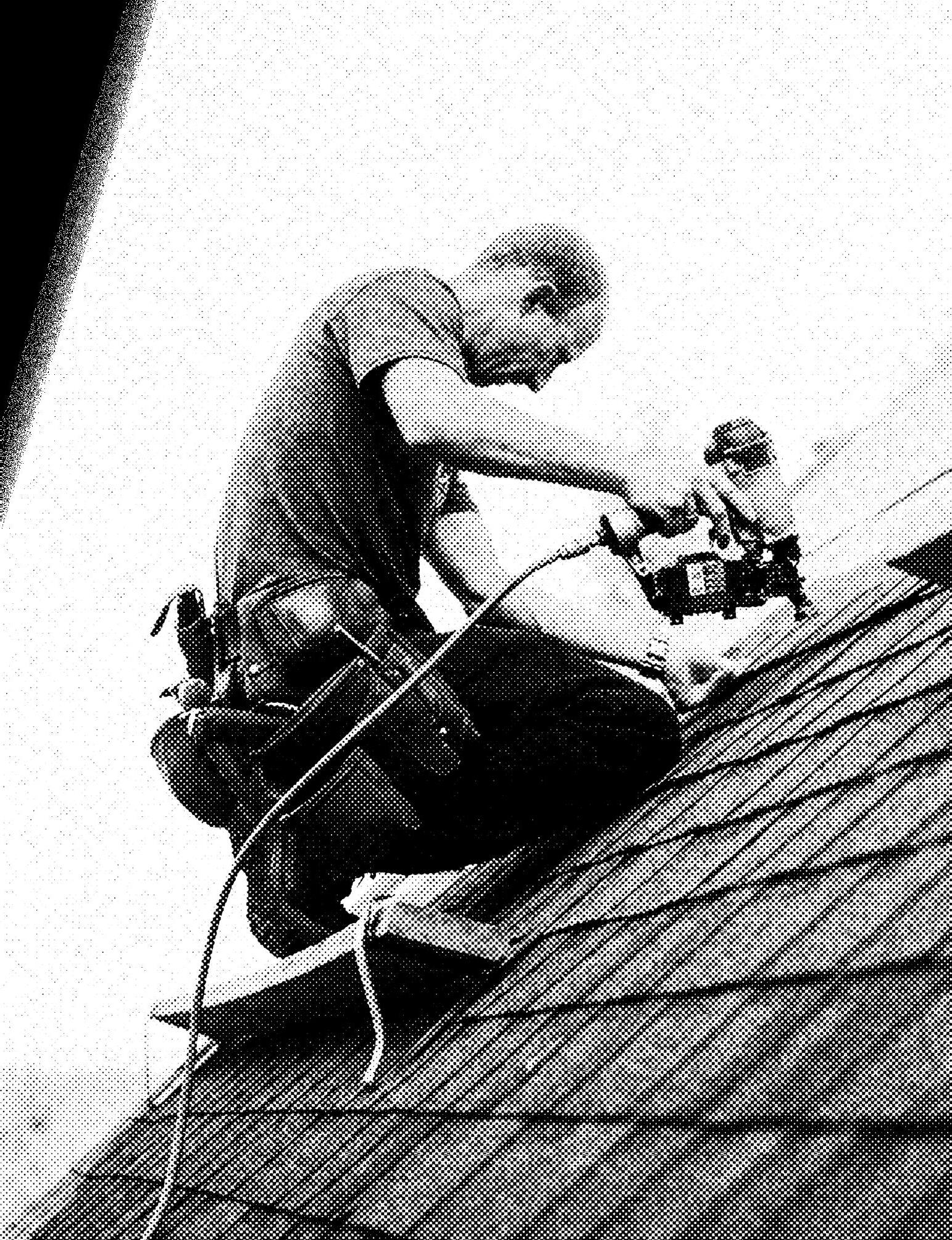
The Team & Culture section explores the people and teams behind roofing businesses. Gain insights into:
• Workforce Size
• Hiring & Training
• Salaries & Benefits
• Company Values


“Your company values are the backbone of your culture. When you live them every day, they become a powerful differentiator that attracts both loyal customers and top-tier talent.”
BEN HODSON, CO-FOUNDER & CEO, JOBNIMBUS


How

2–5 is the most common number of employees you’ll find at a roofing company (28%). However, almost 10% of roofing companies say they have no employees at all.
How to nail it: If you’re operating without employees, consider hiring 2–5 team members to streamline operations and better manage your workload. A small, dedicated team can help you grow your business while maintaining quality and customer service.
High-volume and high-revenue roofing companies generally employ more employees, especially in the 21+ category (46% and 38%, respectively).
How to nail it: To scale your business into a high-volume or high-revenue operation, grow your team strategically. Focus on adding roles that enhance efficiency, sales, and customer service to support increased demand.
High-volume and high-revenue roofing companies generally employ more employees, especially in the 21+ category (46% and 38%, respectively).
How to nail it: To scale your business into a high-volume or high-revenue operation, grow your team strategically. Focus on adding roles that enhance efficiency, sales, and customer service to support increased demand.
Highly rated companies tend to have small teams—over 1/3 have between 2 and 5 employees.
How to nail it: You don’t have to have a big team to get high reviews. Focus on building a small, efficient team that prioritizes quality over quantity.

Insurance companies tend to have fewer employees than those that do just retail or both. They tend to contract out rather than hire full-time employees.
How many 1099 contractors do you work with, not including your employees?

Half of roofers have between 3 and 10 subcontractors that they work with.
How to nail it: Leverage subcontractors to help boost your efficiency and workload. Ensure that their quality of work is up to par with industry standards and your company’s standards.
As expected, high-volume and highrevenue roofing companies work with many subcontractors to reach their lofty goals. They particularly lead the way in the 16+ category, where there’s as much as a 29% difference between the high companies and their counterparts.
How to nail it: To scale your business into a high-volume or high-revenue operation, consider increasing how many subcontractors you work with. Subcontractors can help you handle higher demand and expand your capacity without overextending your in-house team.
As expected, high-volume and highrevenue roofing companies work with many subcontractors to reach their lofty goals. They particularly lead the way in the 16+ category, where there’s as much as a 29% difference between the high companies and their counterparts.
How to nail it: To scale your business into a high-volume or high-revenue operation, consider increasing how many subcontractors you work with. Subcontractors can help you handle higher demand and expand your capacity without overextending your in-house team.
The majority of highly rated companies follow the overall trend of having 3–5 subcontractors (28%), but there’s also a jump at the 11–15 range (11% vs. 7% base).
How to nail it: Consider working with 3–5 subcontractors for most projects, but be prepared to scale up to 11–15 subcontractors when tackling larger or more complex jobs. This flexibility can help maintain high-quality work while meeting a higher demand.

Insurance-only companies skew high on the number of subcontractors they work with—¼ of them work with more than 16 subs.
How to nail it: If you operate an insurance-only roofing company, consider working with a pool of 16 or more subcontractors to efficiently handle a higher project volume.

Roofing contractors are prioritizing growth-driven roles for 2025, with sales representatives (56%) and project managers (36%) topping their hiring plans.
How to nail it: To stand out in a competitive market, clearly define role expectations, invest in training programs, and offer competitive compensation to attract top talent.
High-volume companies want to hire more office administrator roles next year, with office managers at 26% (vs. 18% base) and office staff at 38% (vs. 25%).
How to nail it: Office administrators are a huge asset to keeping your business profitable. Base roofing companies should consider streamlining administrative workflows and defining processes to support scaling. Crosstraining for office staff and using a CRM for project tracking can help reduce administrative bottlenecks.
High-revenue roofing companies are prioritizing office personnel (58%), project managers (42%), crew members (27%), and subcontractors (24%) in their hiring decisions next year.
How to nail it: To be a high-revenue roofing business, build an operational foundation that attracts reliable subcontractors and crew members later. Focus on investing in tools that enhance communication, scheduling, and workflow efficiency.
Highly rated roofers want to keep their five-star ratings next year by hiring new or more office staff (32%), sales managers (25%), and marketers (21%).
How to nail it: To maintain a positive reputation or improve your current one, hire office staff who can provide prompt, consistent service and invest in sales and marketing to encourage customer engagement.

Retail-only roofers and roofers who do both retail and insurance want to hire additional subcontractors and crew members, while insurance-only roofers want sales managers and sales representatives.
How to nail it: If you’re in retail or insurance roofing, focus on hiring additional subcontractors and crew members to meet increasing demand. For insurance roofers, prioritize adding sales managers and representatives to strengthen your sales process and handle customer relationships more effectively.
Do you have a consistent way of tracking employee performance and potential?

Nearly 60% of roofers have a way of tracking employee performance and potential.
How to nail it: Use a performance tracking system or conduct regular performance reviews to evaluate employee growth and productivity better. Reward worthy employees and identify who’s eligible for promotions with better insights.
High-volume roofers are more likely than base ones (67% vs. 54%) to have a consistent system for tracking employee performance, demonstrating the importance of structured processes in effectively managing larger teams.
How to nail it: Roofing contractors, especially those handling fewer jobs, should adopt performance-tracking tools to foster accountability and identify opportunities for employee development.
High-revenue roofing companies are more likely to track employee performance than the base (70% vs. 56%), highlighting a correlation between structured performance management and business growth.
How to nail it: Both groups have room for improvement. Companies in the base can implement scalable performancetracking methods, like goal-setting or regular reviews, to drive growth. Highrevenue companies can incorporate rolespecific key performance indicators to drive continuous employee engagement.

More base companies have a way to track employee performance than highly rated companies do (60% vs. 57%).
How to nail it: While many highly rated companies succeed without tracking employee performance, implementing a simple performance tracking system can provide valuable insights, improve efficiency, and help sustain your high ratings as your business grows.

The bulk of roofing contractors reported 5% or less workforce turnover this year, with 41% indicating no loss.
How to nail it: Although employment is relatively stable in the roofing industry, don’t lose focus on employee retention strategies like offering competitive benefits, creating a supportive workplace culture, and providing clear career growth opportunities.
Highly rated roofing companies experience less employee turnover, with nearly ½ reporting no departures compared to only 30% of base businesses.
How to nail it: Your external company reputation can often reflect internal employee job satisfaction—a positive work culture creates better-quality work. Improving retention through fair wages, better communication, and strong leadership can enhance team stability.
Insurance roofers experience higher employee turnover than retail or mixed roofing businesses.
How to nail it: Not all employee departures are preventable (i.e., retirement), but insurance roofing companies can improve long-term employee satisfaction by investing in training, prioritizing competitive compensation, and providing support for navigating complex insurance-related work.

“Happy crews make happy customers. Investing in your team’s well-being creates loyalty and better work.”
CASON CURRIDEN, OWNER, OLYMPUS ROOFING

Most roofing contractors hired at least one full-time employee this year, with the majority adding 1–5 new team members. However, a significant portion (22%) did not hire at all.
How to nail it: Hiring up to 5 employees balances fast growth and maintaining a high review rating. Be careful with your hiring strategies as you scale.
High-revenue companies hired more aggressively, with a significant portion (35%) adding 6 or more full-time employees this year. In contrast, base companies primarily hired in smaller numbers or not at all.
How to nail it: Revenue growth often enables greater workforce expansion to support operations and scale. Base companies should assess whether limited hiring is hindering their growth and explore ways to strategically expand their teams, such as prioritizing high-impact roles.
Highly rated roofing companies reported slower workforce growth compared to their peers, with more reporting no new hires (28% vs. 15%) and fewer hiring in larger numbers.
How to nail it: While these companies maintain strong customer satisfaction, they may be more cautious in scaling their teams. It’s a fine line, but consider whether your slower hiring pace is limiting your ability to meet growing demand or expand operations.

Retail roofers and retail/insurance roofers lead the pack in employee growth, with 67% of retail roofers hiring 1–5 employees and 97% of companies doing both retail and insurance adding 1–5 employees.
How to nail it: There’s more growth in the retail sector. If you’re in retail roofing or handle both retail and insurance work, focus on hiring 1–5 employees to support your growth. Strategically expanding your team can help you manage increased demand and maintain quality as your business scales.

Most roofing companies fill positions within 1–4 weeks, with ¼ hiring within a week.
How to nail it: For roofers that face extended hiring periods, write clear job descriptions, build a pool of qualified candidates, and use applicant tracking systems to escalate time-to-hire.
High-volume roofing companies fill positions faster, with 54% hiring in 2–3 weeks, while base companies require at least a month.
How to nail it: High-volume roofers have jobs to fulfill and are motivated to move quickly to hire. Look at your hiring processes to see where potential roadblocks hinder your ability to meet demand.
High-revenue and highly rated companies tend to take longer to fill positions, with a significant portion requiring a month. On the other hand, base companies often take just 1–3 weeks to hire.
How to nail it: Without compromising candidate quality, high-revenue roofers should look at their hiring process to identify potential roadblocks that could slow down the path to growth.
High-revenue and highly rated companies tend to take longer to fill positions, with a significant portion requiring a month. On the other hand, base companies often take just 1–3 weeks to hire.
How to nail it: Without compromising candidate quality, high-revenue roofers should look at their hiring process to identify potential roadblocks that could slow down the path to growth.

Nearly ½ of roofing contractors that perform retail and insurance roofing reported filling positions in 1 week, which is likely due to a larger candidate pool.
How to nail it: If you’re a retail- or insurance-only roofer, you can learn from roofers that offer both services by building and maintaining a qualified candidate pool to hire from quickly.
How much time per week do you spend training your sales and office employees?

High-volume and high-revenue companies generally spend more than 4 hours on training per week.
How to nail it: 2 hours of training per week is a healthy amount. More than 4 hours a week is ideal to help your employees excel but don’t let it impede their time to successfully complete projects.
What is the average salary for your installers? Not including overtime or commissions.

Not including overtime or commissions, most installers earn between $51k and $100k annually, with smaller portions offering salaries at the higher or lower ends of the spectrum.
Installers at high-revenue roofing companies typically make higher salaries, with a larger portion of businesses (62%) paying between $51k and $100k compared to the base, where installer salaries are more likely to fall into the $25k–$50k range (33%).
Most highly rated companies offer higher salaries to installers, with 7% paying more than $201k per year.

An average office staff salary, not including overtime or commissions, is between $25k–$75k (84%). In our experience, the office staff is often the lifeblood of the organization, so it’s crucial that they get compensated accordingly.
Office staff at high-revenue roofing companies typically have higher salaries, with 70% making $51k–$100k compared to base companies, where nearly half (45%) make $25k–$50k a year.
What is the average salary for your production managers? Not including overtime or commissions.

An average production manager’s salary falls between $51k–$75k (37%), not including overtime or commissions, but it can go as low as $25k (22%) and as high as $201k+ (1%).
Production managers at high-volume and high-revenue companies skew on the higher end of salaries, making $76k–$125k (50% and 48%, respectively).

Most roofing companies have company values. High-volume, highly rated, and high-revenue roofers are more likely to have company values.
How to nail it: Create company values that reflect your mission and guide your team in decision-making. Values can also help differentiate your business to customers and in the competitive marketplace.

The top 10 values collectively showcase a dedication to ethical practices, quality work, and fostering strong, trusting relationships with customers and communities.
How to nail it: Simplify your company values and have only a few that really embody your business. Keep them topical and straightforward to make it easier for your employees and customers to remember and connect with them.

The most common benefits that roofing businesses offer are paid time off (69%) and perks like parties and lunches (67%).
How to nail it: Consider expanding your variety of benefits, such as performancebased bonuses, professional development opportunities, or flexible work options to ensure you attract and retain top talent.
High-revenue roofing companies outdo the base in every category except for perks like lunches and parties (64% vs. 68%).
How to nail it: Go beyond lunch perks, but don’t cut them out completely. Emphasize benefits like bonuses, professional development, and wellness programs while also integrating team-building activities like lunches and parties to strengthen morale and employee satisfaction.

“Paid
time off is just the beginning. To truly attract top talent, offer benefits that show you’re invested in their growth—like professional development opportunities or performance-based bonuses. It’s about creating a culture where employees feel valued and empowered to thrive.”
JARED OLSEN, VP OF PEOPLE EXPERIENCE, JOBNIMBUS
The Future Outlook section looks ahead to 2025 and beyond, focusing on projected revenue goals, industry innovations, and challenges. Key topics include:
• Revenue Projections
• Roof Completion Goals
• Industry Trends
• Company Milestones



Roofing companies are almost perfectly divided between those who project they’ll earn under $4M (49%) and those who will earn more than that (51%) in 2025.
How to nail it: Setting clear goals and strategically scaling can help you surpass the $4M threshold in 2025.
The number of high-volume roofers who said their revenue would be over $20 million in 2025 (27%) is off the charts compared to base companies (2%).
How to nail it: To reach over $20 million in revenue, focus on streamlining processes and efficiently handling significant project volumes.
A tiny portion of high-revenue roofing companies are on the low end of the projected revenue spectrum—only 4% say they’ll earn $4M or less in 2025.
How to nail it: To move beyond the 4-million-dollar mark, adopt the strategies of successful companies, like improving efficiency, embracing technology, and diversifying your services.

35% of roofers say they must complete 101–250 roofs next year to reach their revenue goals. That’s a stark difference from the 39% of roofers who say they need to do anywhere from 251 to over 1,000 roofs in 2025.
How to nail it: If your target is 101–250 roofs, prioritize quality and profitability per job. For higher targets (251+ roofs), invest in project management tools, subcontractors, and organization.
34% of high-volume roofers said they need to do over 1,000 roofs to hit their revenue goals next year. Alternatively, zero high-volume roofers said they’d need to do 100 or fewer roofs to hit their goals.
How to nail it: To achieve ambitious revenue goals, you’ll likely need to scale to handle 1,000+ roofs annually, so prioritize systems and resources that enable you to manage higher job volumes effectively.
There’s nearly a 15% jump between the retail-only (21%) and insurance-only (20%) roofing companies compared to the companies that do both types (34%) in the 251–500 roofs range.
How to nail it: Roofing businesses that do both retail and insurance work have more job opportunities than specialists since their work casts a broader net. If you do both types of jobs, complete at least 250 roofs next year to reach competitive revenue goals.
What are your predictions for the roofing industry in 2025?

“Roof replacements will be retail-based more than insurance covered.”
“Financing will be the future.”
“Tightening of the insurance companies’ parameters regarding increased deductibles and more stringent guidelines for payouts.”
“Material and labor costs will keep going up.”
“2025 will be a year where innovation, sustainability, and efficiency come together in the roofing industry.”
“Fierce competition.”
“AI is going to have a big impact on how we do marketing as an industry.”
“Increasing pressure to provide solutions that are not only cost-effective but also environmentally responsible.”
“Energy-efficient solutions, more sustainablility, an increase in tech-driven solutions, and labor shortages.”
“Offering digital platforms and tools for remote collaboration will be essential for future growth.”
“The ongoing labor shortage in the construction and roofing industry.”

“Insurance companies will be changing policies, making it harder for roofers to take care of homeowners with loss.”
“Product costs and availability.”
“Mergers and acquisitions.”
“Supply chain problems.”
“The influx of roofing companies with zero roofing experience.”
“Weather reports.”
“Customer cost sensitivity.”
“OSHA regulations and compliance.”
“$10 million and five locations”
“3 Project Managers instead of 2”

“5 builds per week”
“Finishing our rebrand”
“25 years in business”
“600 Google Reviews”
“Opening a second location in another state”
“Setting up a training program for our teams”
“$2 million in sales, half a million in net profit”
“38% closing rate”
“Lowering overhead”
“Achieving a 90% customer retention rate”
“Being able to provide benefits to our employees”
“Going international”
“Being able to hire at least 10 more people”
“Increasing bottom line by 5%”
“Donating one roof a year to a family in need”
“Taking my team on a week vacation”
“Joining more accredited organizations”
BY BRIQUELLE SIMPSON, DIGITAL CONTENT SPECIALIST AT JOBNIMBUS
Roofing, led by owner Richie Colletti, has made waves in South Florida’s roofing scene. Specializing in residential and commercial projects, the company has grown from a small operation into a multimillion dollar company.
Powered by a relentless focus on top-notch service, adaptability, and innovation, they still faced significant challenges to their upward momentum. But it all changed when they found the right tool to instill organization and professionalism in their operations.
Starting out, owner Richie Colletti struggled to keep the business organized. “I was using napkins, any kind of piece of paper I could find lying around. It was hard to keep track of everything, and it was very unprofessional looking,” Richie shared. This ad-hoc system wasn’t just inefficient; it also affected the company’s credibility with clients.
Disorganization led to lost opportunities. Without a reliable system to track customers and jobs, they were often playing catch-up, losing out on potential work. “Sometimes I would lose the data, basically lose touch with the jobs, and I lost a lot of jobs that way,” Richie explained.


The disorganization made scaling the business nearly impossible. “It was very difficult to operate without something like JobNimbus.”
Determined to overcome these challenges, Richie began to search for a solution to help Leak Busters operate more professionally, improve client trust, and create a foundation for sustainable growth.
Richie knew he needed a better system to keep his business on track. That’s when he discovered the power of a CRM and project management software designed for contractors: JobNimbus.
Richie was drawn to JobNimbus for its simplicity and affordability, especially as a growing business with a modest budget. “JobNimbus was very affordable. It was very easy to use. The other platforms were a little more difficult to use. I had to basically have a tech person, as well as a big bank account, to be able to use the other solutions,” he noted.

With JobNimbus, Leak Busters gained a suite of tools to:
• Organize jobs and client data
• Build and send professional proposals and invoices
• Streamline payments through JobNimbus Payments
JobNimbus not only made managing projects easier but also provided the professional edge Richie needed to win over more clients.
“Being able to track everything has been very crucial for our growth...”
Since adopting JobNimbus, Leak Busters Roofing has seen remarkable growth, skyrocketing from $1 million to $15 million in annual revenue. The ability to track performance metrics, like conversion rates, and access client data from anywhere has been invaluable. “Being able to track everything has been very crucial for our growth,” Richie said.
The JobNimbus mobile app became one of the most impactful features, allowing Richie to stay connected to his business no matter where he was. “I can just pull up the app on my phone and see what’s going on in the business at any given time,” he explained, adding that this flexibility provided peace of mind when traveling.
This newfound organization and flexibility allowed Leak Busters to focus on delivering exceptional service, further fueling their reputation and success.
Leak Busters’ success story is a testament to the power of the right tools at the right time. By integrating JobNimbus, Richie and his team were able to streamline their operations, improve client interactions, and scale their business to new heights.
As Richie puts it, JobNimbus is “a really good way to stay on top of your business and be super-efficient and buy back time.” JobNimbus has been a crucial part of Leak Busters’ growth, allowing them to focus on what really matters—delivering quality roofing services to their Southern Florida community.
For any contractor looking to grow, Leak Busters Roofing is a shining example of what’s possible when you embrace technology and stay organized.
The Homeowner Perspective section provides an inside look at what customers truly want from roofing companies. Explore insights about:
• Reasons for Roof Replacements
• How Homeowners Choose Roofers
• Preferred Communication
• Payment Trends
• Concerns



Most homeowners replaced their roof because it was old and needed replacing (43%), followed by storm damage (29%) and normal wear and tear (29%). Few updated their roof to add solar panels (7%) or for a different look (4%).
How to nail it: Emphasize your expertise in replacing old roofs and managing storm damage repairs, including assistance with insurance claims. If you offer solar panel installation, promote this service to attract homeowners making eco-friendly upgrades.
For homeowners who recently replaced their roof, storm damage (35%) and normal wear and tear (29%) remain significant reasons, but replacing an old roof dropped to 24% compared to 73% overall. Solar panel updates (12%) and aesthetic upgrades (6%) were higher in this group than the overall data.
How to nail it: Homeowners are shifting toward more solar and aesthetic upgrades, so make sure you offer these services to take advantage of the growth here.

Most homeowners were satisfied with their previous roofing projects, with 44% rating their experience as very satisfied and 38% as satisfied, while only 3% were dissatisfied.
How to nail it: Continue delivering highquality work to maintain satisfaction, and focus on improving communication and follow-up to convert satisfied customers into very satisfied ones.
The recently replaced roofs group had more satisfied homeowners (48%) compared to the overall group (23%), but fewer were very satisfied (23% vs. 54%).
How to nail it: With overall satisfaction trending down, homeowners have higher expectations for good service, communication, and professionalism. Use all the latest tricks like texting, a CRM, and digital proposals to exceed expectations.

Referrals (72%) and online search (23%) led the way this year but don’t discount advertising. As is typical with marketing, it’s probably having a greater effect on homeowners than they realize.
How to nail it: Nailing customer satisfaction and asking for referrals will continue to reign as king. But don’t let off the gas on advertising, so when someone mentions your company name, it’s one they’ve heard or seen before.
What’s the most important to you when choosing a contractor? Rank by (1) most important to (12) least important.
Homeowners prioritize a roofer’s reputation, price, and reviews when choosing a contractor.

Recently replaced roof homeowners still value price and reputation the most, but reviews are more important now than they were over 3 years ago. Recent homeowners value warranties, contractor certifications, and contractor insurance more than the overall group does.
How to nail it: Maintain a focus on quality and trustworthiness while ensuring your warranties are clear and appealing. To align with recent homeowner priorities, consider positioning your marketing on long-term value.
What’s most important to you when choosing your roofing materials? Rank by most important to least important. (1 is highest)

Material type and warranties are equally as important and at the top of a homeowner’s list when choosing roofing materials. Color and brand rank lower.
How to nail it: Emphasize the durability and warranty options of each material type, as these are often the homeowner’s top priorities. While color and brand matter less, they can still be used as secondary considerations to match aesthetics and personal preferences.

The most common payment methods were credit cards (30%) and financing (28%), followed by cash (18%).
How to nail it: Make it easy for homeowners to pay by offering financing plans and accepting credit cards. Highlight these options in your sales process to accommodate a wide range of payment preferences.
The past 3 years have seen massive movement toward more credit card usage for roofing work (45% vs. 20% of base).
How to nail it: Homeowners really love their points and will pay for a roof with a credit card to get them. If you aren’t accepting credit card payments right now, that should be among your top priorities for this year.

Credit cards and financing are king for homeowners wanting to pay for roofing jobs. Sure, 25% still want to pay with cash, but 86% would prefer credit cards and financing.
How to nail it: A growing number of homeowners are ready to lay down some plastic for a repair or new roof. This year, be prepared to collect credit card payments from every homeowner.
Of those who have had a roofing job done in the last 3 years, credit card is the fastest-growing payment method in terms of interest (67% vs. 50%).
How to nail it: Watch the gains in debit cards, ACH, and mobile apps, but stay focused on offering credit card payments with competitive rates.

How important is the availability of financing options when choosing a
Nearly half of homeowners (45%) say they need financing options, and 37% say they’re somewhat important.
How to nail it: If you don’t offer financing, get on it. Once you do, highlight your financing options prominently in your marketing and proposals.

Text messaging still leads the pack, though phone calls are on the rise. Notably, 49% preferred text messaging last year, whereas 68% now prefer texting. Compared to what roofers said in this same report, roofers primarily using phone calls are missing the mark.
How to nail it: The big takeaway is that homeowners are starved for communication with roofers. The more ways you can communicate with homeowners, the better. Try texting instead of calling on your next job to see what difference it makes.
How important are reviews to you when choosing a roofing company? (0 is not important)

90% of homeowners say reviews are important or super important. If it isn’t the main signal for choosing a roofer, it’s almost always a contributing factor.
How to nail it: Hold a meeting with your team to discuss how your company can increase its number of reviews and the quality of those reviews. Never leave a job without asking directly for an honest review.

Concern is high for taking on a new roofing project. Most are concerned about the quality of work (80%), but ballooning costs (68%) and poor communication (63%) are high up on the worry list.
How to nail it: Come out of the gate in your marketing, in-person meetings, and proposals with messaging and actions that help ease these concerns. Show off your quality work, make precise estimates, and communicate well from the beginning.
While overall concerns have been lower for the past 3 years, ballooning costs (71% vs. 66% base) continue to worry homeowners. The state of the economy and recent uncertainty are undoubtedly playing their part.
How to nail it: A clear, well-defined scope of work will do wonders to ensure your profit margins while keeping costs consistent for the homeowner. Leverage estimating and proposal software to better ease this concern for homeowners.

With everyone shopping online nowadays, homeowners are starting to expect the same kind of shopping and checkout experience with roofing proposals. They’re also expecting a pizza deliverytype update to know where their job is at.
How to nail it: Offer an electronic proposal you can send directly to homeowners so they can review, sign, and apply a job deposit directly. Offer updates on job progress using an automated CRM.
The last 3 years have seen an even greater need for electronic proposals and online checkout processes. This shift is most likely due to leftover COVID lockdown-buying behavior, but this data shows we won’t see this going away any time soon.
How to nail it: Electronic proposals, e-signing, and digital payments are the future of the homeowner buying process for roofing. Purchase or adopt a solid proposal tool this year to capitalize on this shift in behavior before your competitors do.
Is there anything else you want to share about your roofing company preferences?

“Just be honest and authentic.”
“Any education on solar and uncommon materials like metal.”
“Ease of phone communication.”
Thank you to our incredible industry partners and friends who generously sponsored this year’s Peak Performance report—your dedication to the craft will drive our industry forward.
Owens Corning leads in delivering innovative, sustainable roofing materials that enhance energy efficiency, safety, and aesthetics, while fostering a culture of collaboration and commitment to a better future.
owenscorning.com/en-us
PEAK SPONSOR:
As a premier distributor in the U.S. and Canada, Beacon delivers top-quality materials and unmatched services. With a century of expertise, Beacon empowers roofers to build more confidently.
becn.com


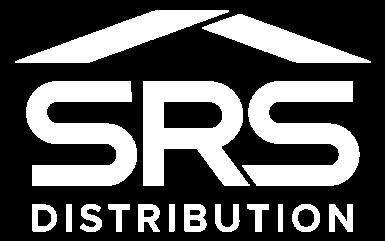
SUMMIT SPONSOR:
SRS Distribution supplies roofing materials and building products with unmatched inventory, timely delivery, and exceptional service. Focused on contractors, they build lasting relationships and drive excellence across the roofing industry.
srsdistribution.com
SUMMIT SPONSOR:
EagleView is a leading aerial imagery and insights company. With over 300 unique patents, they provide unmatched geospatial data that sets the gold standard for accurate property measurements.
eagleview.com

SUMMIT SPONSOR:
CompanyCam simplifies project documentation for contractors with photo organization, timestamps, and team sharing. Features like annotations and timelines enhance communication, helping teams manage jobs efficiently and maintain detailed visual records.
companycam.com
SUMMIT SPONSOR: Angi
Angi, formerly known as Angie’s List, connects homeowners with trusted professionals for home improvement, maintenance, and repair services. With verified reviews and expert support, every project becomes stress-free and successful. angi.com

RIDGELINE SPONSOR: naturalForms
naturalForms digitizes workflows by capturing documents, signatures, photos, and sketches on mobile devices. It automates data collection, reduces errors, and enhances team communication for streamlined business operations. web.naturalforms.com

RIDGELINE SPONSOR: HOVER
HOVER transforms smartphone photos into accurate 3D models, delivering precise measurements and design visualizations. It streamlines project planning and enhances collaboration between contractors and clients for seamless home projects.
hover.to

RIDGELINE SPONSOR: HailTrace
HailTrace provides real-time weather insights with accurate hail, wind, and tornado mapping. Advanced forecasting and analytics empower businesses to respond quickly, track storms, and maximize efficiency during severe weather events.
hailtrace.com




We want to extend our thanks to the following individuals who contributed their time, talents, and insights to this report:
• Ben Hodson, CEO, JobNimbus
• Brad Hodson, Director of Growth Marketing, JobNimbus
• Briquelle Simpson, Digital Content Specialist, JobNimbus
• Kyle Larson, Senior Director of Business Operations, JobNimbus
• Seth Neilson, Executive Creative Director, JobNimbus
• Taylor Orton, Graphic Designer, JobNimbus
The information in this report is general and should not be considered legal, tax, accounting, consulting, or any other professional advice. In all cases, you should consult professional advisors familiar with your situation for advice on specific matters before making any decisions.
JobNimbus does not accept any liability for any loss or damage caused by any errors, omissions, or reliance on any information or views in this document. All trademarks and copyrights remain the sole ownership of their rightful owners/licensees.
Copyright © 2025 JobNimbus. All rights reserved. Reproducing, redistributing, or disseminating this document without written permission is completely forbidden.
Learn more at jobnimbus.com.



